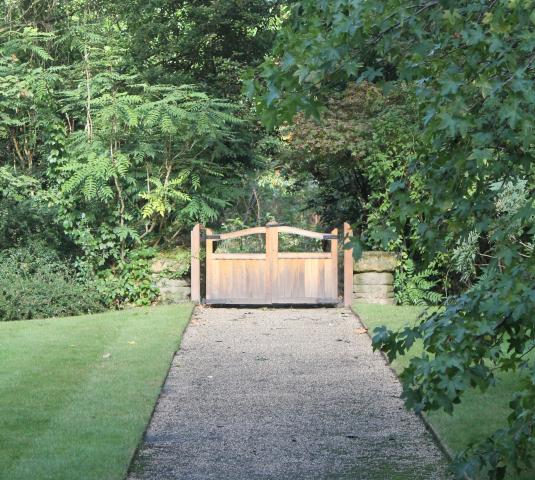Autumn 2016

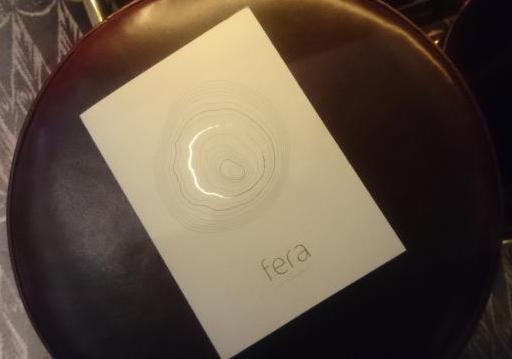
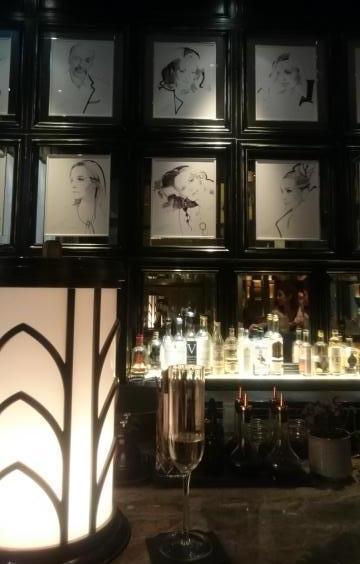
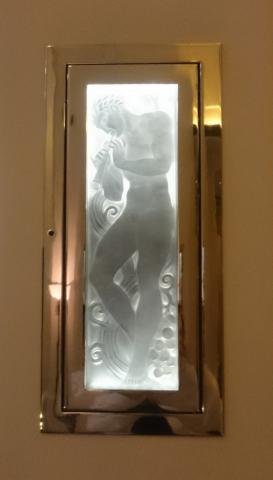
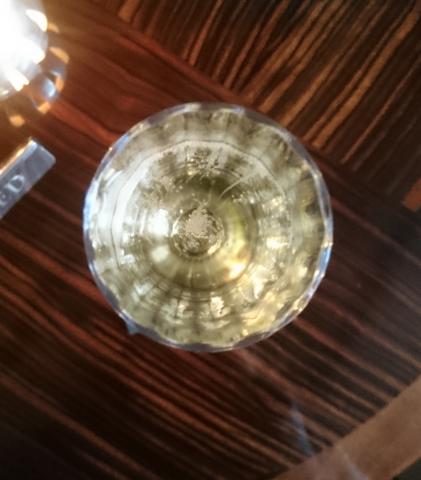
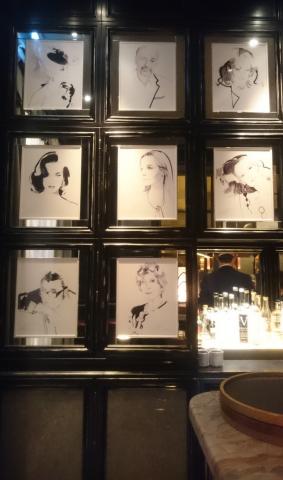
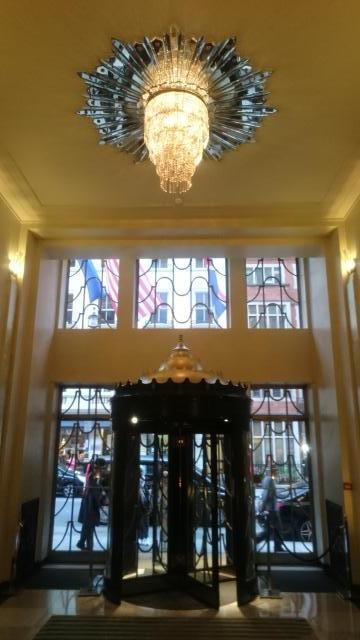
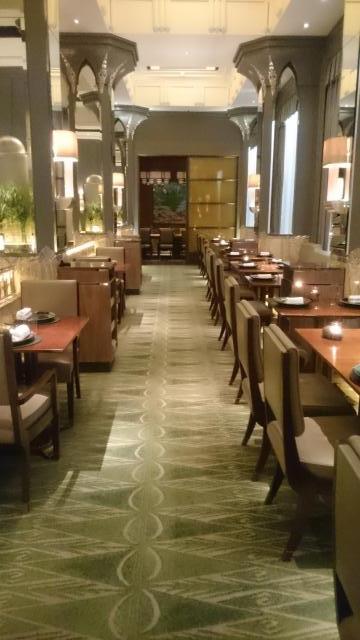
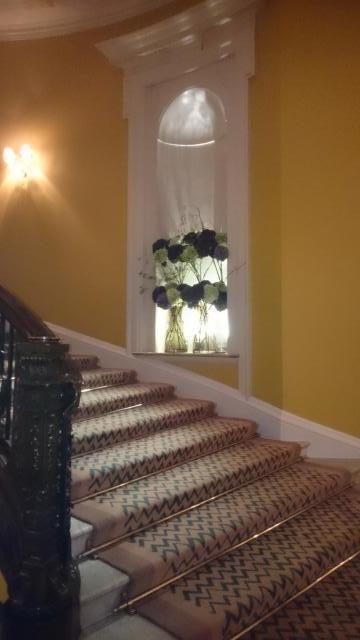
_2172.JPG)
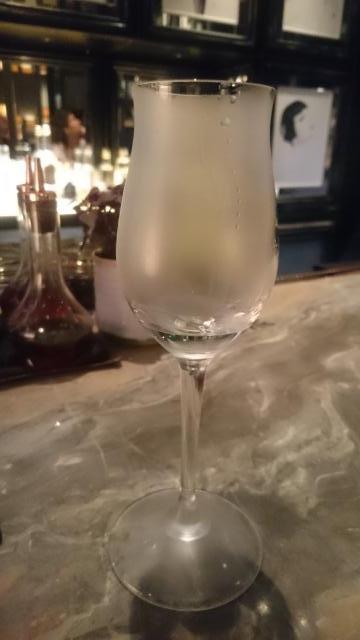
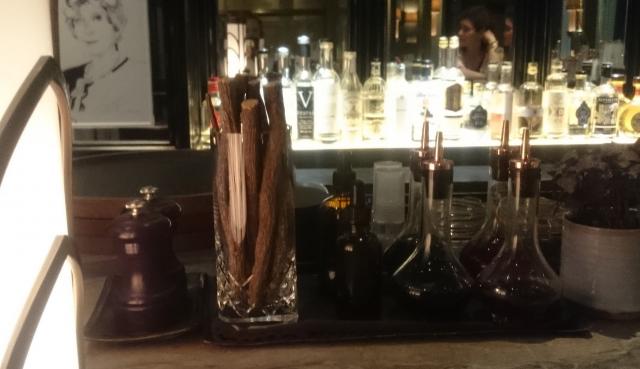

Claridges has long played host to Royalty with a heritage of entertaining famous Royal women such as guest Empress Eugenie when she hosted Queen Victoria this sealed the reputation of the Hotel as having the approval as the last word of elegance and luxury to relax in. In the 20th century the Hotel became host to leading fashion and celebrity figures such as Audrey Hepburn and Film maker Alfred Hitchcock, with Joan Collins, Mick Jagger, Brad Pitt and Miriah Carey amongst recent guests. The fashion industry's relationship with the Hotel remains as strong as ever with Private Haute Couture, Ready to Wear and fashion presentations happening at the hotel on a regular basis. Claridges is firmly on the map as much as it has been at any point in the past. Fashion also leaves it's footprint in the lobby at Christmas time with Christopher Bailey of Burberry designing the Claridges tree in 2015 (my last visit) and Dolce and Gabanna, John Galliano for Dior and Kally Ellis of McQueens in previous years. Lanvin also decorated the tree with a family of puppets in 2011 designed by Alber Elbaz.
As a leading venue for private Haute Couture and fashion shows in the heart of Mayfair, Claridges has a special link to British Fashion and ahead of London Fashion Week I dropped by on an early September evening for a glass of Champagne and think more about the Hotel's history. I will happily tell you it's not my visit and unlikely to be the last. The world famous Claridges Bar has a host of delicious options to temp with sandwiches, salads, nibbles and drinks to satisfy a wide variety of tastes. I sat drinking my glass of Champagne and enjoying good company while looking at the huge array of spirits and wines that the Claridges bar team have to offer to guests. It's a comfortable spot to start contemplating how Claridges through it's history attracted the world of style and fashion.
Claridges guests today are just as stylish a group as ever and Claridges where kind enough to show me through three of the bars that each has it's own special fashion history. Claridges Bar itself is a very handy meeting spot for the fashion world on the corner of Davies Street and Brook Street it sits close to the hub of Mayfair's fashion industry hot spots around Bond Street, South Molten Street and Mount Street and the nightlife of Berkeley Square.
Hidden behind a glass door The Fumoir bar is a legendary spot where new cocktails are born and an early example of a hidden alcove created with one mirrored walls allowing guests in the bar the chance to see those passing through the Hotel. It feels private but also fun and a great special place to take people to and chatter and watch the world go by. One of the many areas that Claridges commands huge respect in the expertise of it's bar staff. They blend new drinks and re-compose classics with ease and the atmosphere of the hotel remains fresh and alive. Vintage photographs decorate the walls and the velvet seats and crystal lights of Thierry Despont's design create a room that's delicately lit and relaxing.
Fera Restaurant and Bar at Claridges opened in 2014 and lead by Chef Simon Rogan who formerly ran L'Enclume in Cumbria it is run on organic farm to table principles celebrating the movement of the seasons. At it's centre a beautiful bleached apple tree trunk forms a timeless reflection of nature and this sculpture by Clive Oliver at the heart of the restaurant stands as a fitting contrast to the seasonal changing menu on offer Simon and his kitchen use the finest ingredients from his own 12 acre farm in the Cartmel Valley.
At the near by bar located next to the dining area a display of images by Fashion Illustrator David Downton, Claridge's Artist in Residence line the walls of the saloon and settles the guests into the genial atmosphere blending the past and the present. The bar staff described how they use daily fresh ingredients in the drinks from Simon's kitchen and are able to create a very wide variety of drinks to customers wishes. They prepared the most beautiful light and floral Gin and Tonic in it's chill frosted glass using Hendricks and garden herbs. Light and floral it was a lovely new take on a classic theme.
David's images of some of the Hotels famous guests are a modern illustrated guest book from the fashion world telling the story of famous faces who have passed through Claridges doors. Personalities from different arenas of the industry include Diane von Furstenberg, Sarah Jessica Parker, Daphne Guinness, Alber Elbaz, Dita von Teese, Joan Collins, Paul Smith and David's long term muse and good friend Erin o'Connor. Many people pass through Claridges from all over the world but fashion will always be one of the Hotel's cornerstones as we move from one style age to the next.
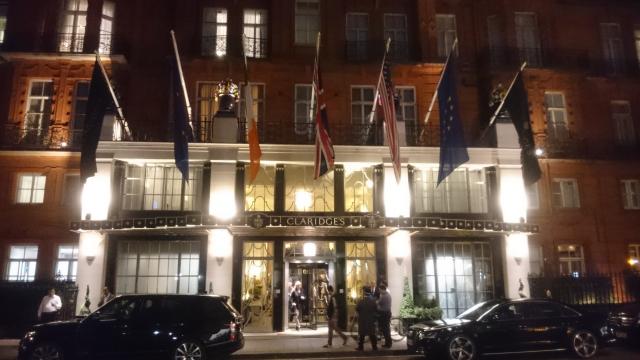

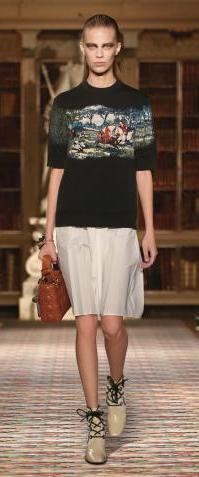
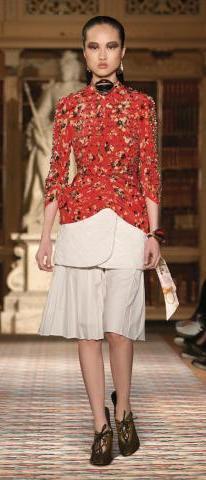
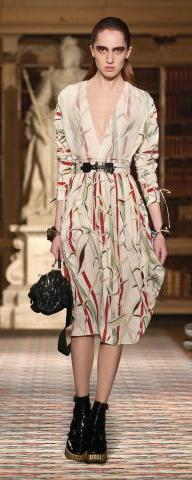
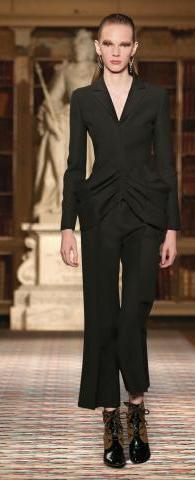
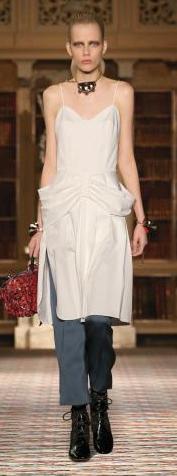
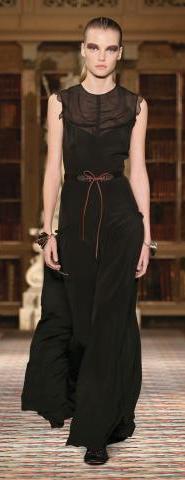
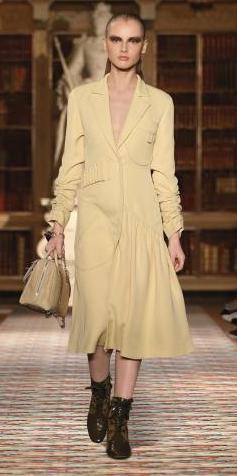
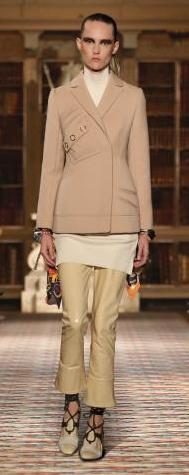
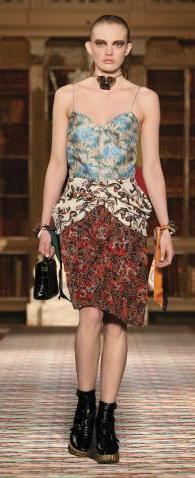
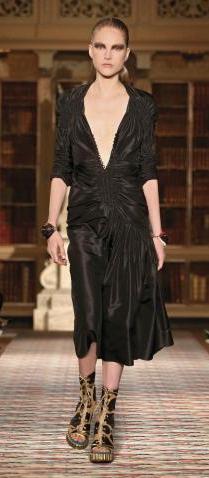
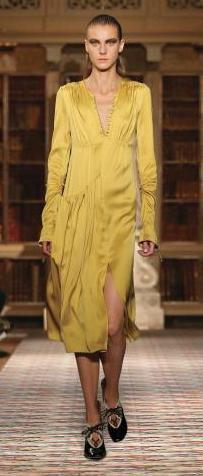
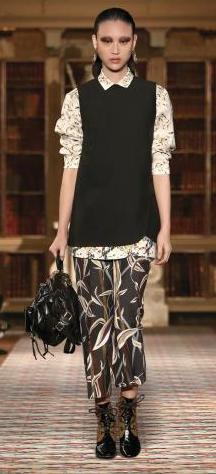
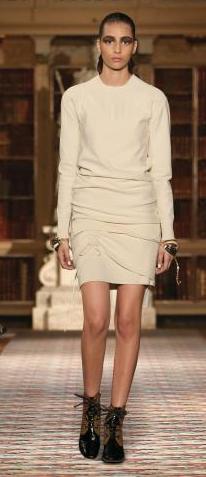
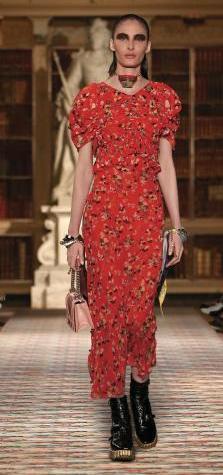
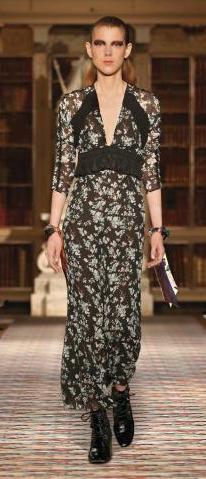
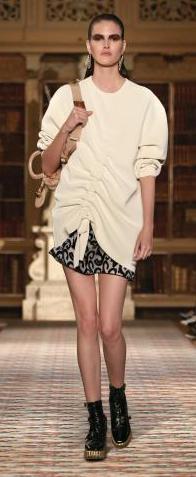
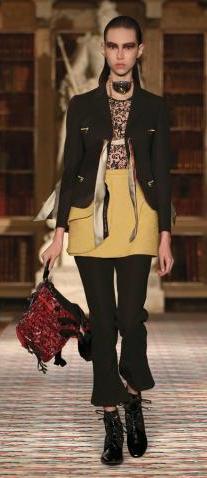
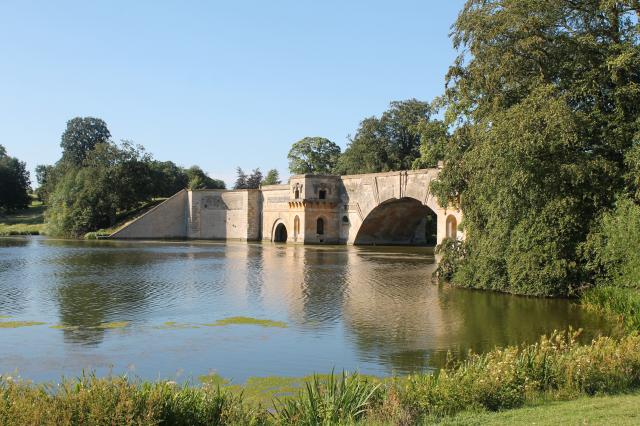
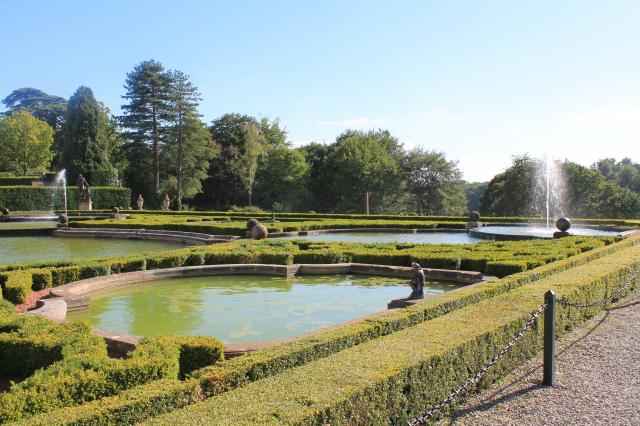
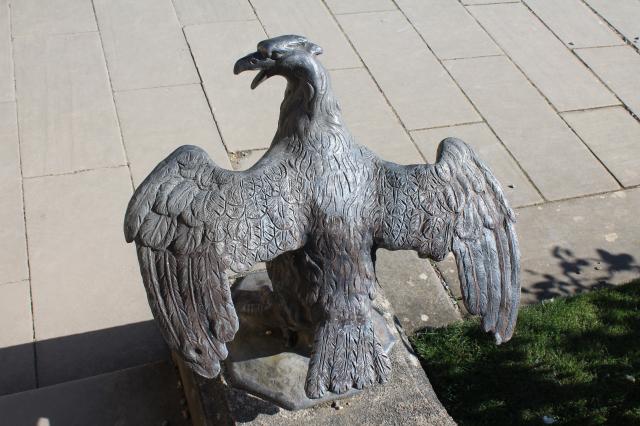
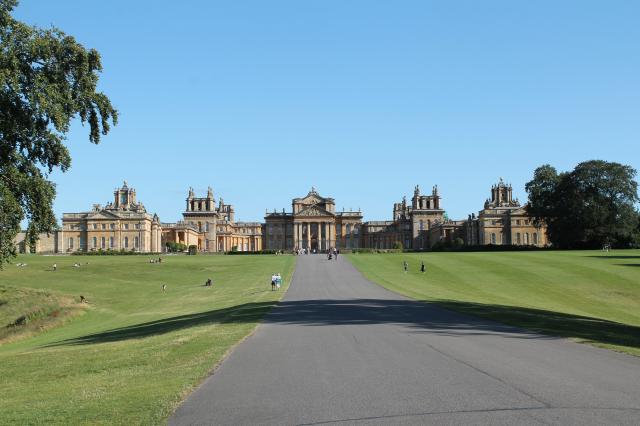
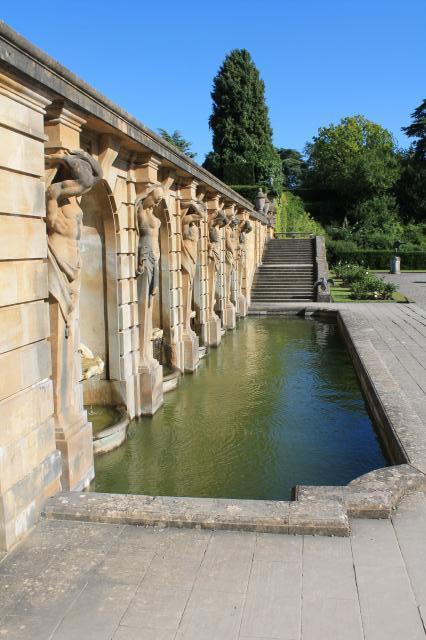
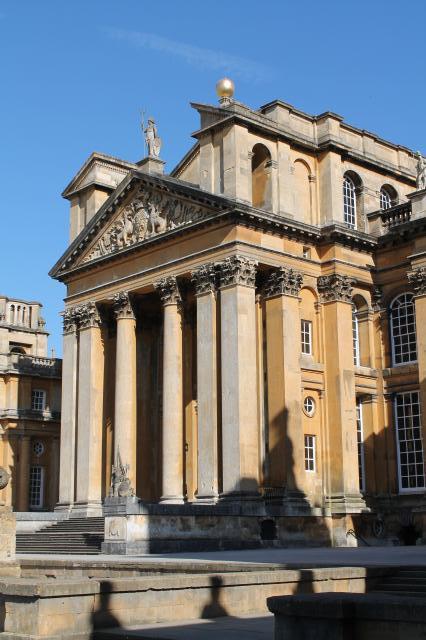
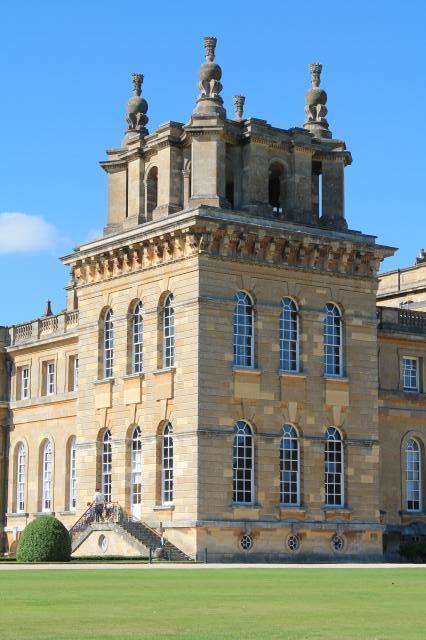
Images below of the 2017 Cruise collection show at Blenheim Palace with kind permission of Dior (C).
The Blenheim Literary Festival: Dior at Blenheim 15th October 2016.
Justine Picardie speaking about the links between the House of Dior and Chanel Blenheim Palace.
In a beautiful high vaulted room filled with light that was once part the Blenheim stables the 1st Duke of Marlborough watched over Justine and her audience as she began a fascinating insight into the background behind the special relationship between Dior and Blenheim and how Justine's own story became linked with both and CHANEL. Justine feels that the real story of Blenheim and Dior has been lost and one of her interests is in telling stories lost to fashion history. Blenheim's history she said, has mostly been of battles and politicians. Justine quite rightly points out that the story of women and the material clues often left behind tell a much deeper version of history.
Her well known work on the history of CHANEL and the life of Gabrielle Chanel herself lead her to Dior. For a long time Chanel's background and story and her place in 19th and 20th century history have been ignored. It was a chance rediscovery by Justine of letters between Gabrielle Chanel and Winston Churchill in archives in Cambridge University that shed light on the untold story of her friendship with both Churchill and her relationship with Bendor Grosvenor, the Duke of Westminster. Her companion Bendor was one of Churchill's closest lifelong friends.
The intriguing question lingers, did Chanel ever visit Blenheim? So far Justine is uncertain, no pictures have been found in collections or mentions in diaries or correspondence. What is known is that the then 9th Duke of Marlborough, who was a first cousin of Winston Churchill staid at Bendor's Eaton Hall Estate in Chester as well as on his Scottish estate where Churchill and Chanel notably engaged in a spot of rather competitive fishing..... and guess who was the best? ;-). The scores in the estate fishing books are still there to be seen.
At this point in the early 20th century Chanel had already taken away corsets and the rigid layers of bustles and girdles that had encumbered women where slowly melting away. Justine read the memoir of Consuelo Vanderbilt the wife of the 9th Duke of Marlborough expressed her frustration at the arrangement of her marriage by describing the pain of moving in the clothes that she was forced to wear by her mother ahead of the marriage. Dresses with steel rods in their backs where designed to give her the deportment and carriage supposed of a duchess but caused the teenage girl endless pain. What is less well known is that Consuelo married as her second husband the brother of Chanel's first lover Etienne Balsan and Justine feels (quite rightly I think) the stories of fashion are stories of the lives of men and women. Louis Balsan met and fell in love with Consuelo before her marriage to the Duke aged 17 and loved her all his life.
Following her relationship with Balsan she became the companion of Boy Capel who broke her heart at the time of his marriage to an English aristocrat and again when he died suddenly in a car crash after the first world war. Chanel mourned him in black and the strength of her grief led her to impose black as the colour for the house and as she said herself on fashion itself. She makes black a symbol of independence in the 1920's, of women's strength "I imposed black". When something had been taken from her, life sent her a new love in the form of Grand Duke Dimitri of Russia a cousin of Tsar Nicholas II. One of the green eyed delicate Russian Princes whom she said could be seen around Paris. Dimirti's Sister Princess Marie of Russia had opened her own fashion business in Paris "Kitmir" after she and her brother had escaped with their lives and a modest amount of possessions with other relatives from Russia.
However although they remained friends life brought her to Bendor Grosvenor whom she had met in Europe and fallen in love with. Justine notes Chanel as a magical thinker and in way of thinking Boy Capel had sent her a fellow Brit to take care of her. It may be true that the mystical powers of the British upper class where looking after her in the afterlife, it was testament to her dignity and creativity that she was accepted in many areas of society and enjoyed entertaining and being entertained in Mayfair and Scotland. Justine shared her personal journey in discovering more of Chanel's world and it was during the end of her own first marriage that she began the deeper journey into Chanel's life. Chanel was a flawed woman and did make many stakes but worked hard to overcome them and leave a lasting positive legacy for others as well as a fashion empire.
In a cold February 10 years ago Justine made the journey to the Convent in Aubazine where Chanel lived as a boarder from the age of around 12 to about 18. The cavernous building one home to dozens of nuns and children being schooled was now a silent order of just 11 sisters. There was no electricity or running water and Justine like the nuns slept in an iron bed. What has astonished me in all the years since Chanel first began to design was that no writer had previously gone there before! No early starts by fashionistas packing a hamper and setting out from Paris at Dawn. It wouldn't happen if Chanel had been British! Fortuitously the Mother Superior had received a Justine's letter requesting permission to stay on the day of St Justine and was absolutely delighted seeing it as a sign from the divine. As a guest Justine had to follow their routine which meant getting up in the dark and dressing. She took long walks in the mountains and felt a strong sense of sorority with the dead women who's stories related to the book.
The Balsan family fortune was founded on the manufacturing of military clothing with a government contract dating to the Napoleonic era. With an established fortune they moved amongst the most elegant international society circles whilst also maintaining a close links to the business that supported their lifestyle.
More of my favourite shots I took at Blenheim Palace, great light and no filters whatsoever!
Gabrielle Chanel was a strong magical thinker and Justine believes that she opened doors for her in many ways. Justine stayed with Gabrielle's great niece (who some think may have been her grand daughter) now sadly passed away this younger Gabrielle was then in her 80's and told Justine much more of Gabrielle Chanel's life and gave her pictures. Justine was able to try on the clothes that Gabrielle Chanel left to Chanel the younger. They where as fresh and comfortable as the day they where first worn. At a point when she was wondering how she might further her research Justine attended a dinner party and the man she was placed next to whom she never met before had a fantastic suggestion that she should try looking in the Duke of Westminster's Archives? Justine felt this was Chanel's magical thinking entering her life once more and this kind gentleman also later became Justine's second husband and she told us she had an almost 'Jane Austin' like moment "Dear Reader, I married that man".
His mother was Lady Irene Astor a very beautiful woman like Consuelo Vanderbilt and a dedicated supporter ans fundraiser for the Red Cross. There is a picture taken from the time of the war of her inning a Red Cross pin onto the coat of Sir Winston Churchill and Justine found numerous pictures in Lady Irene's Scottish family home that proved useful during her search. Justine also found numerous Dior clothes that had belonged to his mother, that his nieces now enjoy wearing. Dior couture and ready to wear enjoyed across the generations, the heart warms to this! After this Justine was able to spend time in the Dior archives. Here there where many pictures from the 1947 launch of the House of Dior and clues to the untold or forgotten story of the formation of this show to raise funds for the Red Cross. As Justine was taking photocopies from the Dior archives and as she looked at the prints she was amazed to see her mother in law (who passed away before her marriage) staring back from her in the pictures. She felt the lady's gaze meet hers and then the plan started to form in her mind of bringing Dior to Blenheim Palace once again.
Justine was fortunate to be able to meet members of the Churchill family and as the idea was taking shape Lady Rosemary Churchill, sister of the 11th and daughter of the 10th Duke who attended the Haute Couture shows was still alive although Lady Caroline had passed away. The Christian Dior show of 1947 was christened the 'New Look' by Carmel Snow of Harper's Bazaar and after Christian Dior's death in 1957 the young Yves Saint Laurent took responsibility for the creative direction of the House and brought a second Dior show to Blenheim.
Lady Rosemary discussed the formations of the plans for the show that she and her brother the 11th Duke where very much part of. The original plans themselves are still at Blenheim and show that the dozen models who presented the first show walked a total of 2 miles around the stately rooms of the Palace. Justine enabled for Dior to be able to meet the Duke (now sadly passed away and father of the current Duke Jamie Marlborough). The family where very excited by the project and hoped for good weather but on the day of the show in May 2016 the heavens opened and it was torrential rain. However Paris itself was flooded that week so the beauty of Blenheim, even in the rain, was an easier prospect to deal with than a chaotic Paris. There was a sense of history coming together through Blenheim and Justine feels like it a very apt analogy to the threads of the clothes that we wear. Fashion is important to our understanding and appreciation of history. Christian Dior's 'New Look' of 1947 wasn't entirely new but gave women clothes that used yards of fabric after the war time austerity.
Christian Dior was born in 1895 to a bourgeois family. His father's wealth was inherited from a fertiliser company and his upbringing in the seaside town of Granville in Normandy over looking the English Channel was a strong influence on the life-long anglophile Dior. At this time the French upper classes all had English Governesses for their children, horses where ridden by English Jockeys and schooled by English trainers. Christian Dior grew up speaking English and his mother had an English flower garden at her home in Granville. Dior loved England and Scotland and made a lengthy visit here in the early 1920's. He loved the food, the clothes and the weather with it's changing subtle moods and the country was always close to his heart. Also in Britain it was acceptable to be gay in a discreet way in polite society. The crash of 1928 damaged his families fortunes and the Dior's effectively lost everything that they had worked to build in recent generations. Dior had an art gallery and a great eye for art collecting Cocteau and Picasso, this had to be sold, his mother reportedly died of grief and his brother suffered a mental breakdown.
Dior began to illustrate for a living to support his younger sister and himself an although many of his illustrations may still be around, at the time he wasn't famous enough to sign them so they often go unrecognised in sales. Justine would be very happy to find some by him. Through illustration Dior discovered he wanted to be a couturier and in the late 1930's he was taken on by a French haute couture house. During the war Christian Dior escaped with his Father and sister to the South of France where they grew vegetables to sustain themselves. Dior went back to Paris to work at Lucien Le Long and his sister Catherine joined the French resistance. She was eventually captured and brutally tortured and was sent to Ravensbruk camp in Germany. Like Chanel, Dior became what Justine terms a 'Magical thinker' and he would consult fortune tellers during the war in Paris. He was told repeatedly that his sister Catherine was dead but he never believed it and when he consulted a fortune teller who told him that she was still alive then he knew that it must be true. It was she was still alive. After the liberation of the German camps Catherine did make her way back to Paris.
After a time of suffering Dior turned women into beautiful fashion symbols again using rose pink and dove grey and feathers as his symbols. He developed Miss Dior in honour of Catherine but one of his industry peers namely Chanel was very unhappy about the return to the right fitting styles with bodices that seemed like corsets. The zips and stays to Chanel like a reversal of the liberation that she had given women and she is believed to have decided to leave her retirement in Switzerland to come back to Paris and begin designing once again. Dior's vision however was undoubtedly a very interesting one and it offered to many women, including Princess Margaret, Justine's Mother in Law. The Queen, The Queen Mother and Princess Margaret where admirers of Dior's style and shown the collection privately to her in 1950 and Princess Margaret was so taken with it she ordered her 21st Birthday dress from Dior and she said it was always her favourite. The glamour and style that women had been lacking after the war years.
Justine's mother in law was a Dior client and her father in law had been interned during the Second World War and survived torture their stories both had personal overlap with Dior's as with many other people and they understood that alongside a love of beauty the horror of what people suffered must never be forgotten. Chanel's own background, although different to Dior's, prepared her for a life sales in the garment industry. Her father was a travelling pedlar and Chanel lived at home until the death of her mother when she and her sister relocated to the convent of Aubazine as her father could not care for a large brood of children while also maintaining his humble trade that dictated a life on the road. At the Convent she and her sister learned highly skilled sewing to follow the simple stitches that all little girls where taught in childhood, the convent was however where Chanel's eye was trained to aesthetic perfection with the symbols visible inside Aubazine Abbey appearing many years later in her work. The colours of white, black and beige, the chains with cord threaded through them worn on the sisters vestments later metamorphasised onto the bags. Stars on the ceilings and some shapes looking similar to the double C's that she later adopted as her cipher. At 18 Chanel became a seamstress and she and her sister where considerably skilled in their craft and their work was in demand in the towns populated by military officers.
Chanel believed that women had been encumbered by their clothes in the past and in creating more flexible wearable pieces she was giving dignity and freedom back to them. Chanel felt that by transforming the outerwear worn by the traditional English gentleman into garments that could be worn by women, the hardy estate tweeds, the jackets with a tailored but not painfully fitted construction, that she was helping them. Justine visited the Duke of Westminster's Scottish estate with the man who would later become her husband and saw the fishing estate records that showed Gabrielle soon caught up and passed many of the men that she was fishing with including Winston Churchill and Bendor Grosvenor.
Fast forward to May 2016 and Justine was seated in the Long Gallery of Blenheim where Princess Margaret sat to watch the Haute Couture shows of the 1950's. Ahead of Maria Grazia Chiuri's arrival at Dior the show was the interim studio team brought out the above 2017 Cruise collection that was in a different vein to the Haute Couture last witnessed at the Palace. Justine believes that fashion can accommodate "otherness" and can often break supposed rules from time to time before a return to form. On my Autumn-Winter 2016-17 Haute Couture page you can see the following Haute Couture collection showing a return to the classic Dior House lines. Chanel also understood this power to break ground and encapsulate otherness. Justine believes that "otherness" therefore very much has a place in fashion. Without the contrary their can be no clear path. Harper's Bazaar does believe in Beauty at it's essence but Justine is not denying that ugliness can have a valid place in the language of fashion. The black and white Pathe films of the 1950's showing Dior are key parts of fashion history. But fashion never stops, both in the present tense and in the looking at the past from new angles and Justine is currently researching a new Chanel book with new material that has been discovered.
Harper's Bazaar is soon heading for a milestone celebrating the 150th anniversary of it's launch in America in 1867 next year. It's the world's oldest fashion magazine and the make-up of the anniversary cover was something that was asked by a curious audience at Justine's talk. The covers themselves become collectable editions of Harper's and other titles and Justine is keeping wisely "Mum" about what we will see next year.
The relationship and interaction between Chanel and Dior is one of the most debated and 'wondered about' in fashion history. I see them as both being creative catalysts for each other. Chanel said "fashion is born so that it may die, but style lasts forever" in a parody of an ancient writer I believe but one that succinctly echos the life that clothes seem to contain within them. The clothes that Gabrielle Jnr. gave to Justine where in the same condition as the day that they where the day that the garments where created. The influence that Russia also had on Chanel was touched upon by Justine with Chanel's famous collaboration with the Ballet Russe in designing their costumes evoking thoughts of the expansive grounds of Blenheim Palace that burst into life each season. Chanel was a modernist and always maintained that she was a Couturier, not an artist and her collaboration with Igor Stravinsky on several of his projects gave her a useful platform to expand her creativity in. Russian art met French design.
Straying a little from the Blenheim theme perhaps (unless there are hidden Russian connections at the Palace) it's also worth noting the significant influence that Russian collaboration had on the formation of Chanel No. 5 itself as it was developed with a Russian perfumer at the instigation of Grand Duke Dmitri. Dmitri and his sister Marie with her burgeoning fashion House 'Kitmir' where great friends to Chanel and for those of us who have attended orthodox vespers over the years there is more than a hint of Byzantine incense in the fragrance. Stravinsky also worked with Chanel on a piece called 5 fingers and the number 5 held great significance for Chanel. This was the first modern fragrance that introduced notes in it's perfume like the notes of a musical scale perhaps like those of the staves of music sung by the girls and nuns at Aubazine all those years ago. It also reconciles beautifully the fragrant scents and ecclesiastical music harmonies found in the ancient church that became one of Gabrielle's fascinations. As ever there is poetry with Chanel and her legacy and also like Blenheim itself she manages to find relevance and reach out to each new generation that comes along.
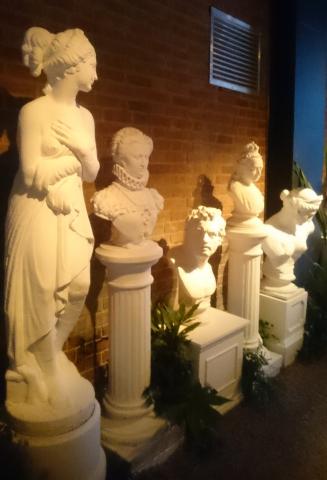
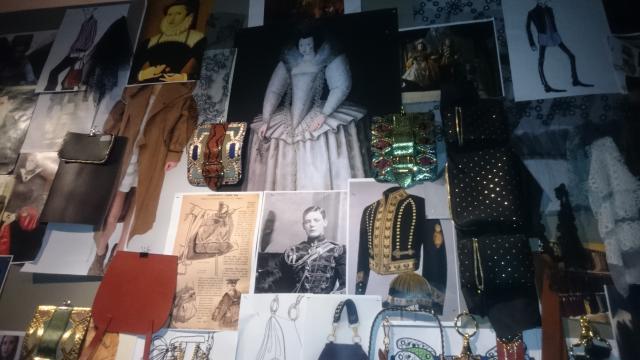
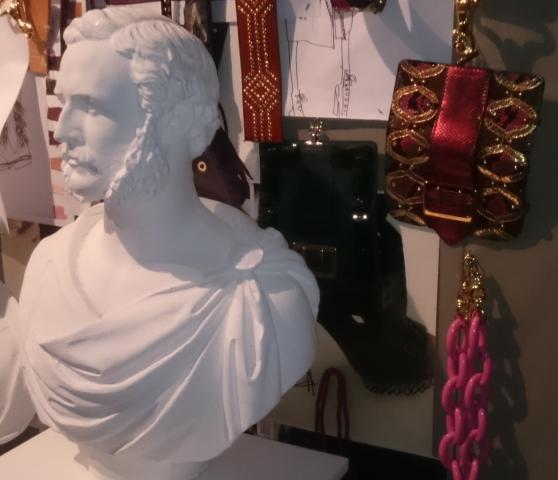
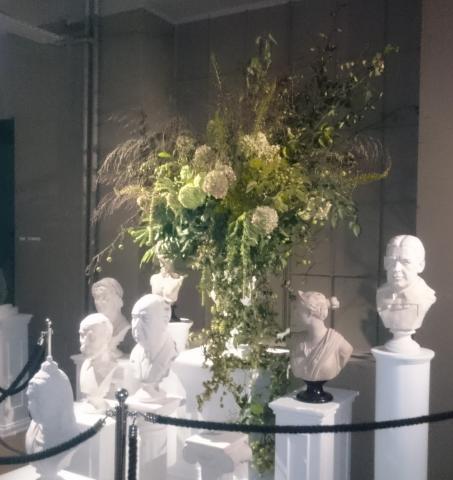
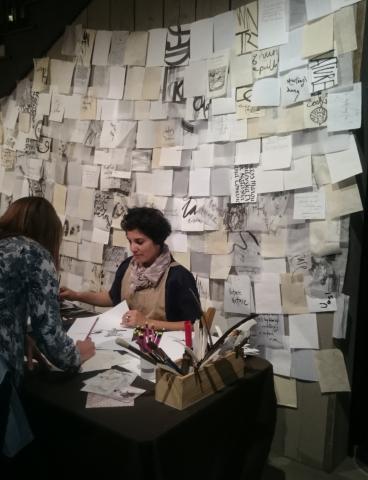
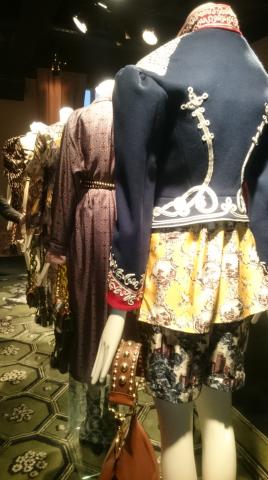
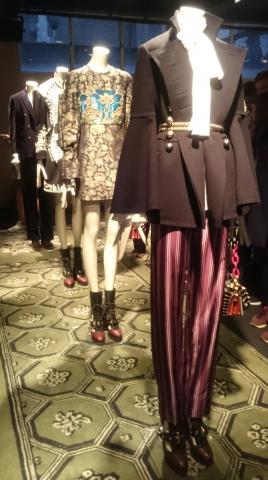
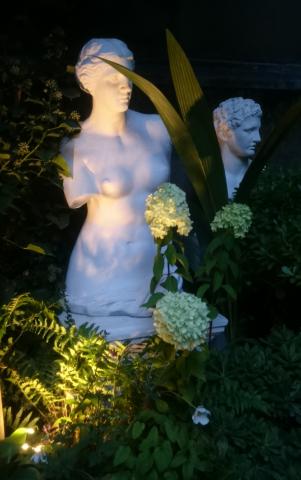
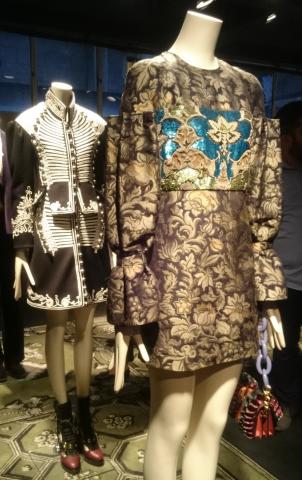
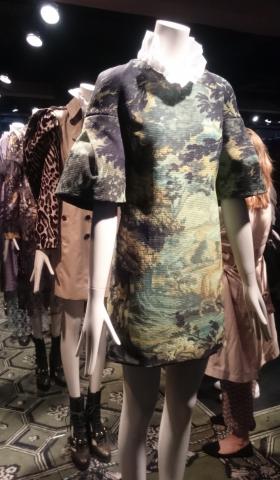
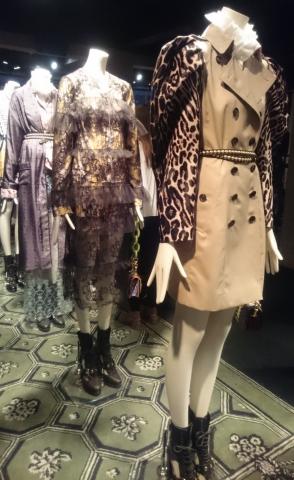
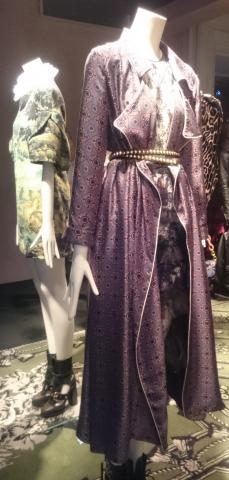
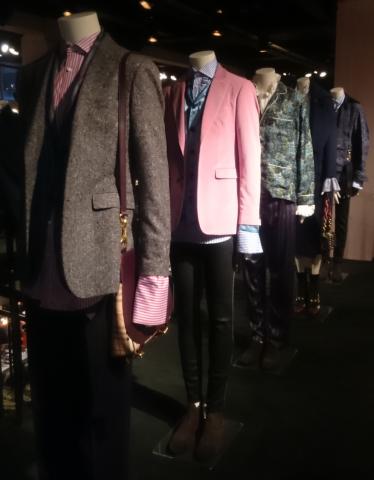
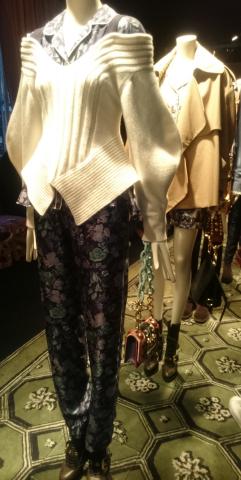
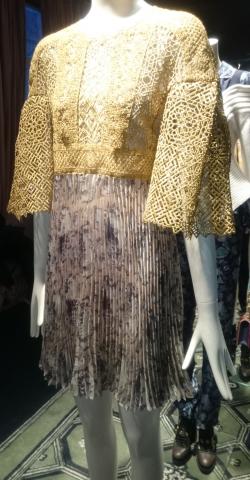
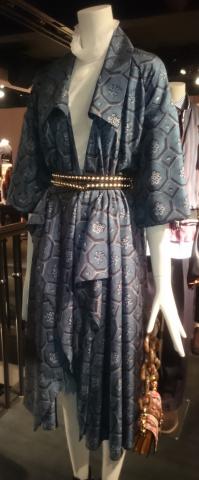
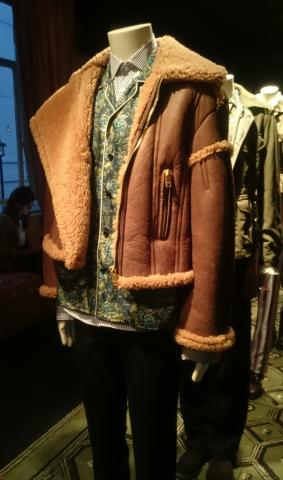
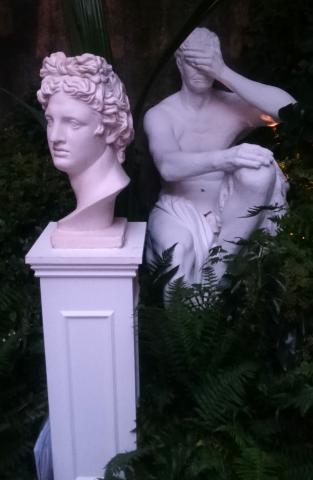
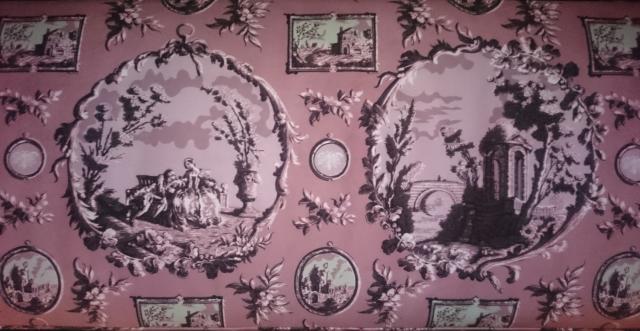
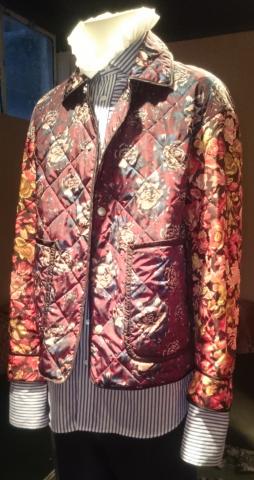
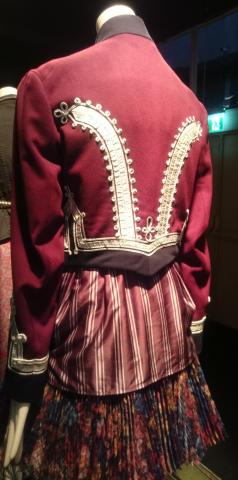
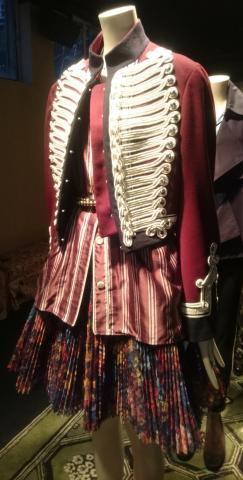
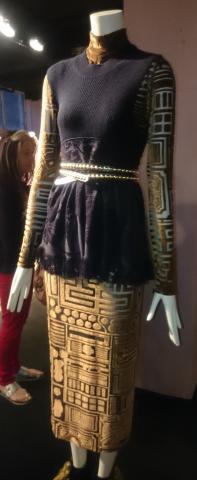
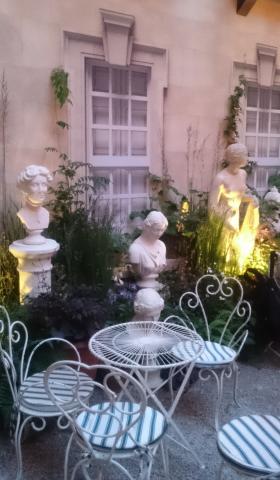
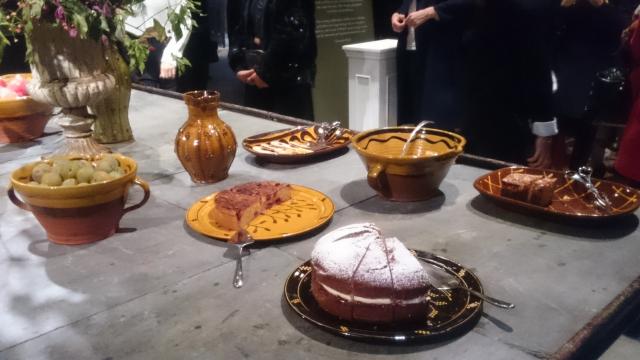
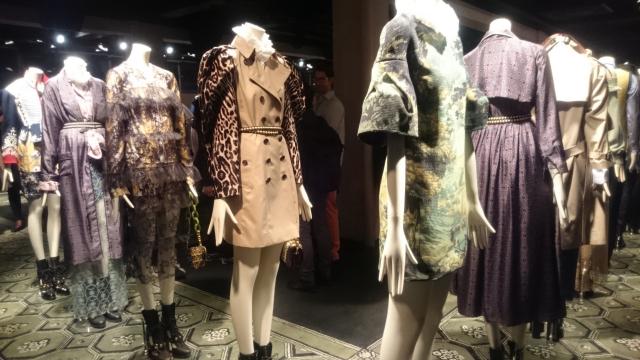
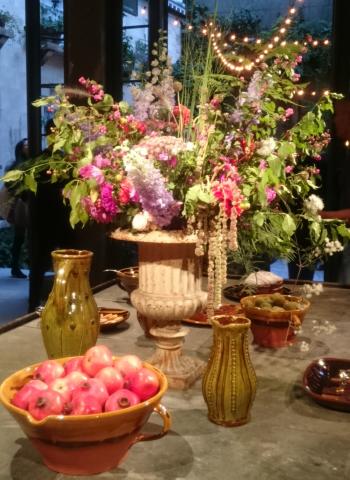
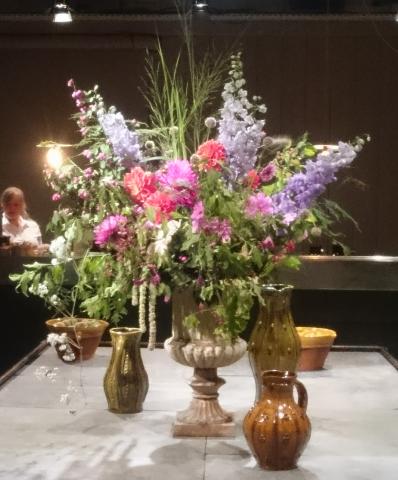
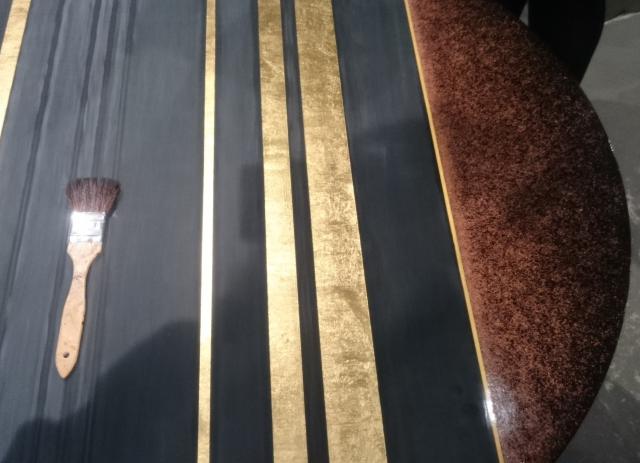
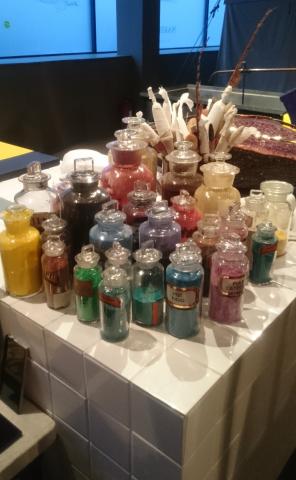
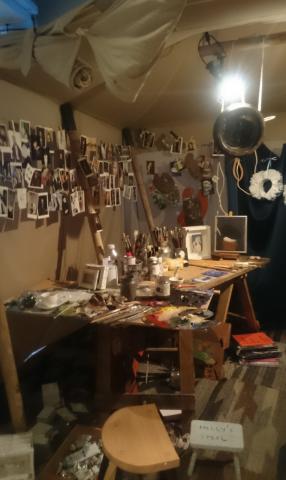
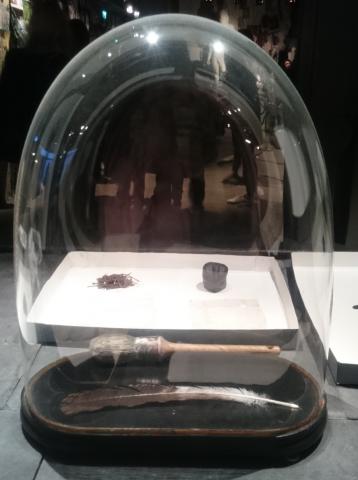
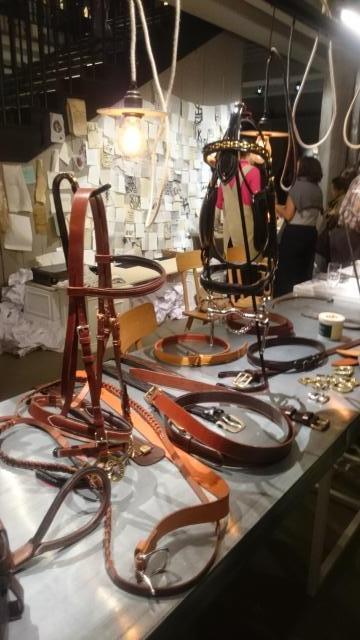
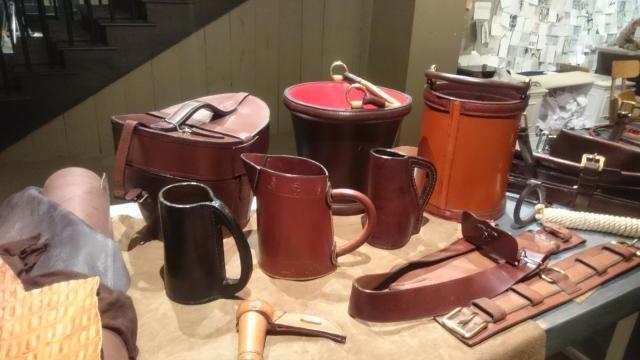
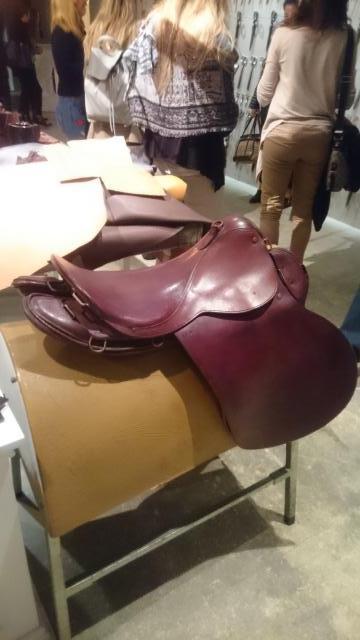
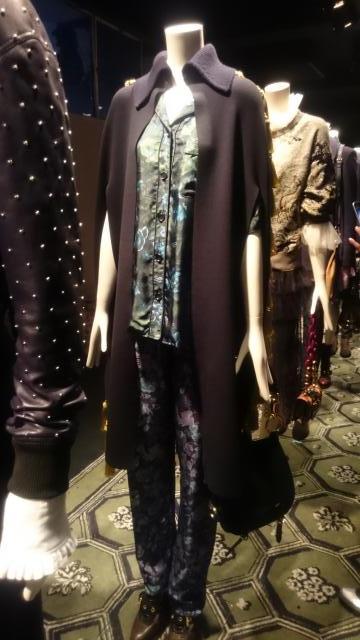
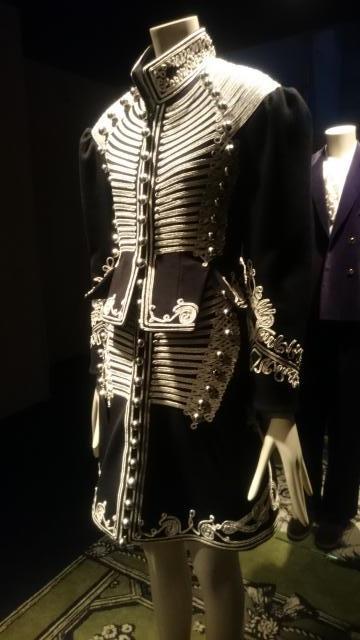
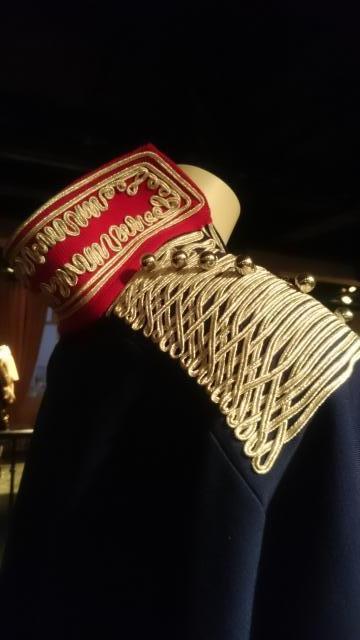
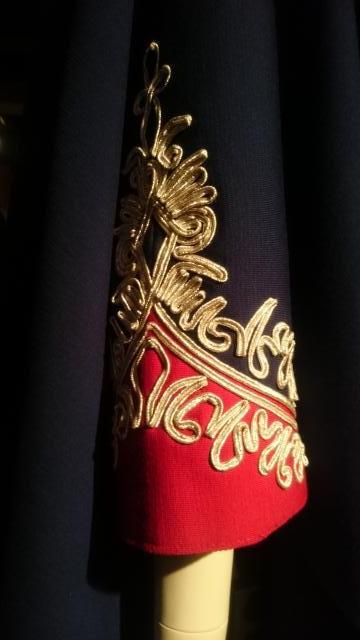
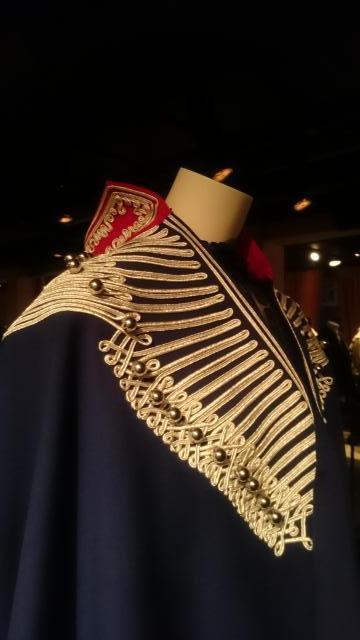
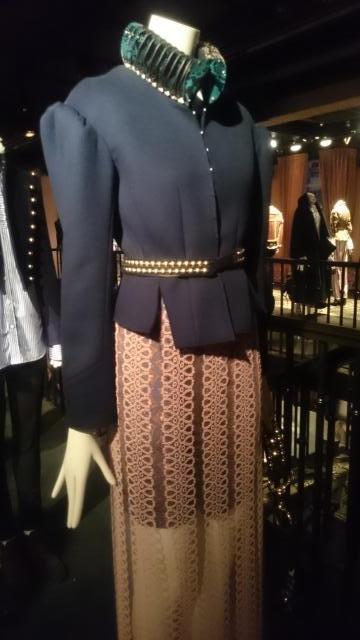
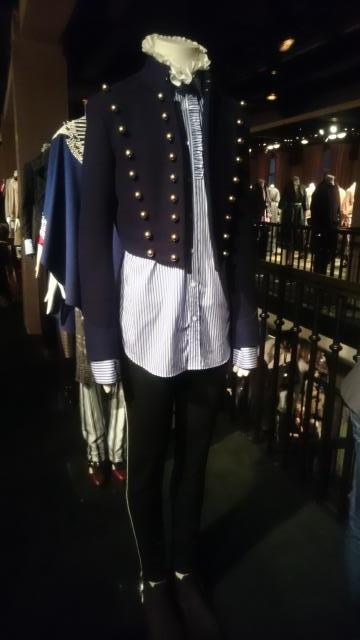
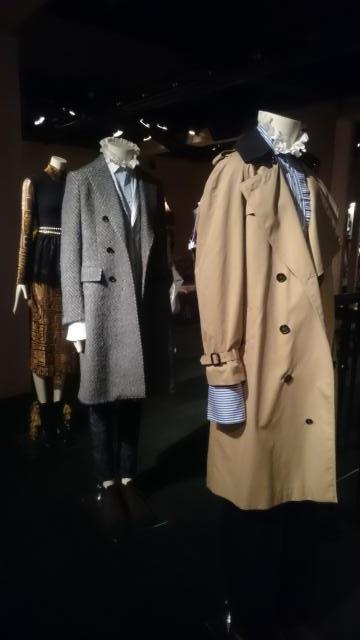
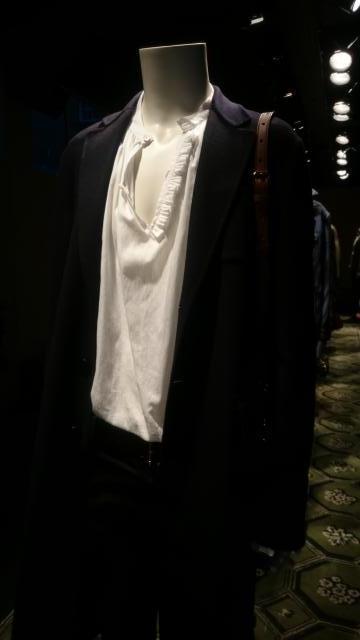
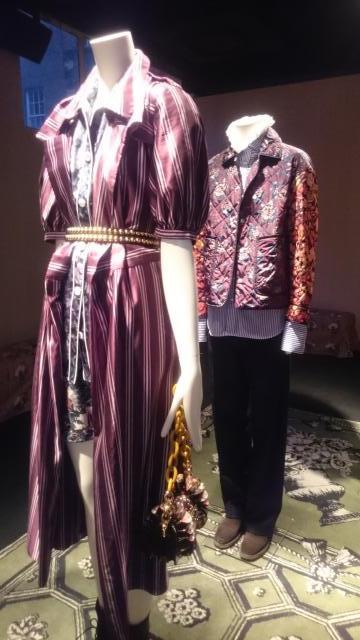
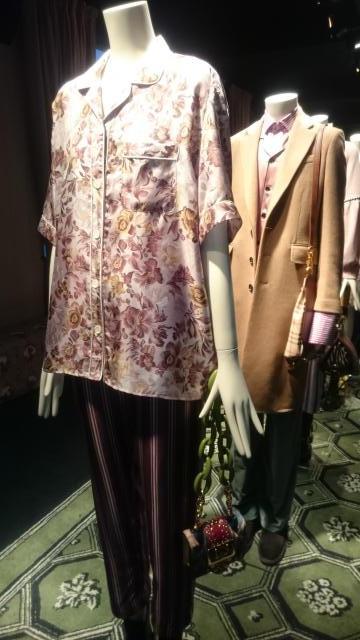
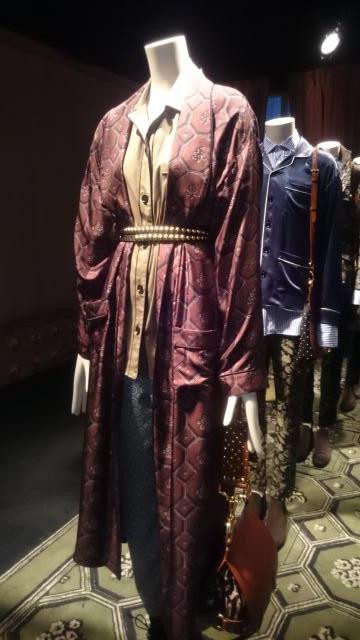
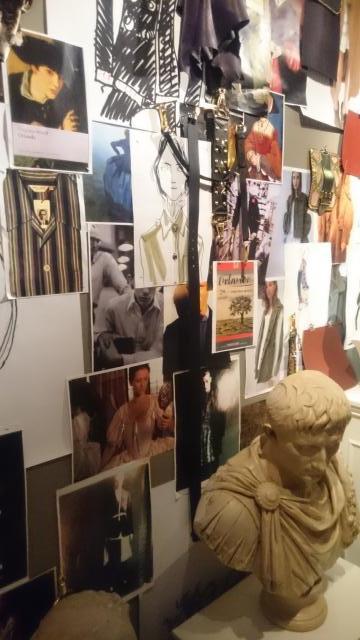
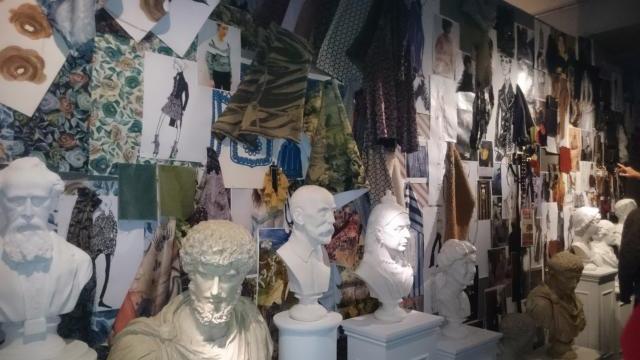
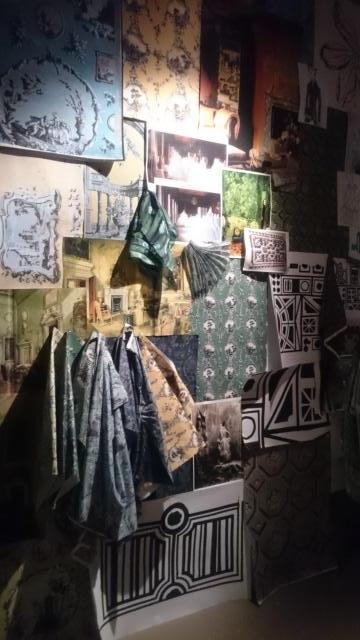
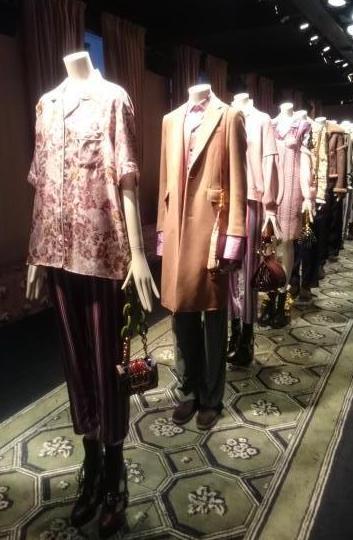
The Burberry Makers House in Central London - a post London Fashion Week tour of artisan crafts and the new Burberry collection.
The ever present busts of Royalty, Statesmen and Gods sit underneath the tableau, the Makers of History perhaps, shaping people's destiny? Set against this backdrop the crafting of the fabrics, accessories and clothes of everyday life shows the elemental representation of craftsmanship and the work of the atelier in keeping society moving, creating and pushing forward. Ornate buckles and belt ties where a popular item in the display that adapted well to wall hanging but for me the fabrics and themed sketches conveyed the images and the messages of the collection like a talking tapestry.
Decked out in the cavernous building where the September 2016 collection was shown, the Burberry team showed us their inspirations in a mood board visible for all. I happened to be standing next to the designer from the team who put it together on my visit and what huge piece of work this was and it was great to hear a little more about the founding of the project. Large swatch fabrics, sketches and gouaches mingled alongside historical figures Winston Churchill, Queens Mary I and Elizabeth I and their step mother Queen Jane Seymour.
Frozen frame images of Tilda Swinton from Sally Potter's production dressed in the costumes made by Sandy celebrating lavish femininity and where pinned alongside images of trouser suits and elongated masculine lines. In one image Swinton regards herself with a looking glass impassively assessing her new female form. There is an obvious link here with Burberry's move to showing both men's and women's collections in one show and some looks below also transpose as easily onto male and female wearers.
The ground floor of the Makers House was home to numerous craft-persons work benches and many of the makers where in residence and happy to talk to us about their work. Seeing craft develop before our eyes at the hands of these artisans was a Burberry bringing us what CHANEL has also brought at their Haute Couture show in July; bringing the audience into the crucible of creation that has a feel about it that crosses time. In many places tools where traditional as at the tannery and painting work benches below, in others such as glass working they where more sophisticated. As a lover of all things equine, I was pleased to see Horses and the leather crafts that people used to rely on so heavily well represented in the collection. Providing the saddles, harnesses and bridles that they
wore when they where working so hard for us provided many jobs for people and, taking a step away from Burberry itself, it's a small reminder of how much we owe these gracious and precious animals. Hardy and simple in their construction they stand at a right angle from the light delicate ready to Wear collections that we see from Burberry each season.
Kings Troop where the modern craftsmen behind these pieces that where available to personalise and purchase during the show. They serve as a reminder of the legacy of Burberry and it's early days under founder Thomas Burberry as an outfitter to teams of explorers such as Sir Ernest Shackleton and other polar expeditions and pioneers of aviation and exploration.
Horses played a key role in life in Court of Queen Elizabeth as it crossed the country in the time period that Orlando is based in at the start of the film. An appreciation of the hours that went into crafting the leather goods that played a central part of the day to day lives of people and that we still use today gives us a deeper connection with our skilled craft making heritage. Bringing everythings back to the basics of expression, the simple quill pen, the basic tool to write and draw
with also made it's appearance with a calligraphy demonstration and varied forms of painting and illustration techniques on glass and paper around the studio. The bright colours of the artists palette in their ground powder form ready for application inspire the eye to dream up numerous creations. The clutter and bustle of an artists studio is brought to life in a make-shift tent that hosted artists working. To the right the broad brush and feather symbolic of two elements of creation and from the feather also the ancient symbolism of words and ideas.
These two simple tools of expression stand alone for recognition. By displaying such objects that formed part of the ancient and modern creative process Burberry is asking us, I feel, to pause and take stock of the basic elements of creation that in our modern consumer age, spearheaded by Burberry themselves championing the 'Buy Now' production to sale model, we are in danger of becoming increasingly remote and detached from. Judging by the healthy interest in the exhibition though I think there is little danger of interest in this waning. They may have been drawn by the Burberry name but they didn't lave without a strong glimpse of the beauty of creation. To the right below one of the most beautiful table veneers I've ever seen in midnight blue and gold was breathtaking and a beautiful sight to behold. Hand crafted it showed a modern design realised with traditional technique. The lacquer work below by Pedro de Costa Felguiras uses traditional Japanese technique.
Upstairs an open gallery where the Fashion Show wound through in Fashion Week housed a large number of mannequins dressed in the Burberry September 2016 collection. This is definitely a collection emphasising eclecticism and there is a sense of bohemian life that Virginia Woolf's Bloomsbury set embraced is tangible here as the looks have a strong element of deconstructing traditional forms about them. To the left below the classic Burberry Trench coat is given leopard print arms and a ruff collar in a bold move creating a new dynamism to a classic House look. Behind sheer light pieces are a brave step for a seasonal Autumn collection but Christopher is an advocate of creating a collection that will span across geographies which means embracing all seasons simultaneously if one wants to cater for all.
To the left the military epaulets and finishing of the traditional uniform jacket create a neat and chic contrast with the stripes of the men's day wear shirt below and the pleated multi coloured skirt beneath transforms the look from masculine to feminine as it moves from head to toe. With a touch of simplicity the looks to the right, a belted shirt dress and a light weight dress composed of intricate stencil and pleating offer a more subtle sexy approach to composition of a garment that will see you through many parties or fun times. The patterning of the blue short dress is in the print style found across the Makers House and was a bespoke design for Burberry for the collection. It reappears in many guises across the collection in both the clothes and the decor showing how fabrics can be used broadly in craft.
The dress above created with a needle work tapestry design with it's scenes of rural country life evokes the paintings of rural landscapes and country estates like the home of Virginia Wolf's Orlando. Finished off with it's frill collar, it's a genteel statement of modern elegance and charm that captures the beauty of the wearer. The open short cum gentleman's robe in the next picture to the right skillfully adapts both the masculine and the feminine into one form. Centre above an off the shoulder sweater with fascinating piping across the shoulders and angular seems sitting at right angles over the hips is a modern new take on the cream knit. The form and style are bold and new and sits gently with the high relief patterning of the blouse and the silk trousers underneath. The sheepskin jacket to the right above is just as much a piece for the guys as well as the girls and an easy piece to coordinate. One of my personal favourites to the far right is a marriage of the quilted outdoor sports jacket in the fabrics of the man's evening gown rather than moss green or navy blue. Super sized pockets add a touch of jocular practicality to the look and styled with blue pin stripes and navy trousers there is a pleasing but not over power effect of contrast here.
The food of Thomas' Cafe brought to the Makers House.
The Statues from the Reliquary outside the Studio.
Leather working from the Precision Workshop by King's Troop and available to buy.
Calligraphy in the Precision Workshop.
The sensory Lab where Pedro de Costa Felguiras created his brilliant lacquers and Gabardine Tent where Holly Freen worked throughout the show painting miniature portraits of guests.
Tools of craft from the old days in the Reliquary.
The Makers House Garden with statues made in clay by Thomas Merrett resident sculptor during the show.
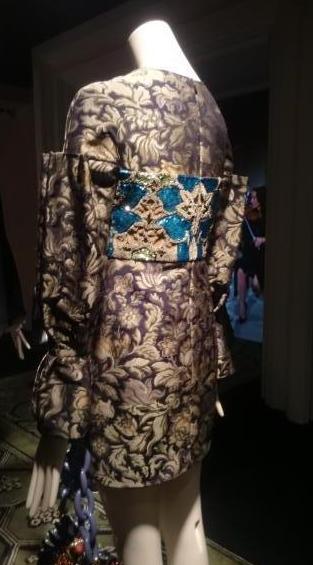
The collection shows a diverse array of looks around lose themes and this arrangement of the styles felt like quite an 'in the moment' way of looking at it. There was no linear adherence to a particular order or series of looks, we where simply left to wander and take as we found. One interesting area that is a must-see this season is the range of handbags and purses that run alongside this collection. Working the D-shape buckle theme as above and using outsized chains in perhaps a distant echo of Chanel and also the industrial age that the House of Burberry was born in. But this is fashion that you can enjoy with a spring in it's step and a smile on it's face. It's a light-hearted exploration in my view taking a jaunt through the wardrobe of a modern aristocrat taking after the English style.
There is a feel of the re-worked vintage brought to life here in a similar way to Orlando in person. The patterns of fabrics from furnishing and drapes that could have adorned double height windows or four poster beds are re-worked into the form of a dress above to the left with hints of a Japanese Obi tied around the waist and a nod to 60's mini skirt chic in the high cut length. The gold of the dress brings out the lustre of the Lotus Blue of the petals and it's a great red carpet or party piece. A reference to technology in the look above and centre in the golden thread dress that recalls a circuit board sits underneath a navy blue vest with beautiful embroidered lace trim. A symbol of the modern woman perhaps. Bringing the traditional military jacket into the female wardrobe in a manner that Tilda herself might be quite interested in interpreting is a feature that returns to the collection again and again. I think personally it works well with understated pieces in combination but this collection gives the freedom to adapt the style in many ways with a selection of separates.
The looks above could mostly be worn by both the boys and the girls and the Burberry Trench gets a new slightly casual cum detective look. Pared down with a blue pinstripe shirt with frilled seemed detail and un-turned cuffs as in most of the collection the frills of the collar give a hint of romance to the looks and whether you're a boy or girl it gives a dandy-ish feel. You could wear navy or patterned print trousers with this look as it's pretty adaptable. The grey wool coat behind is another neutral wardrobe staple that you can dress in a multitude of different ways. With a touch of 'Olivier Rousteg the next piece centre above with it's re-worked military button detail following the tailors lines of the jacket. It's a piece that belies it's own complexity. The shirt running out across over the hip tones down the harder military look making it smart-casual day wear. The detail of the collar in the next piece is a fusion of serpent skin and the intricately ruffed collar that we know from Elizabethan era paintings and surviving clothing. It's an eye catching top note to an outfit that sows one of the key dress design features of the collection, sheer with intricate embroidery detail in the same weaving back and forth serpent like design of the collar. To the right above a look that speak easy casual wear either for the boy or the girl with just that hint of nostalgia and romance.
Thomas Burberry's firm was one of the key suppliers to the British army during the first World War and the legacy of being the militaries lead designer still appears in their play with brocades and epaulets through the collection. The distinctive contrasting trio of navy, red and gold are an eye catching reminder of the Houses past in this field of textile manufacturing. As always Christopher new how to attract a crowd to this corner of SoHo on Manette Street, I believe part of what was originally the old Huguenot district of French artisans and craftsmen and women a long time before SoHo became the place we know it today. Originally named Rose Street it was re-named after one of the fictional characters in Charles Dickens 'A Tale of Two Cities' charting the life of the exiled French after the Revolution. Although known as a hot bed of anarchism in the 19th century this quiet corner discovered by passing through the Pillars of Hercules pub underpass is a reminder to those with more than a passing interest in the Textile heritage of London, of the true foundation of this area.
For autumn 2016 the September collection features on of the boldest arrays of fashion that Christopher Bailey has yet brought out. It's moved away form the more feminine forms of chic that we are used to seeing in more recent years with a more all-purpose offering on the cards for the fashion buying audience around the world. With it's straight to order availability Burberry will get quick feedback about how well this is taken up and staying light on your feet in the fashion world right now is the only way to stay ahead of the game.
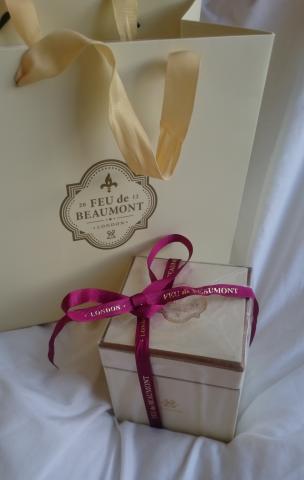
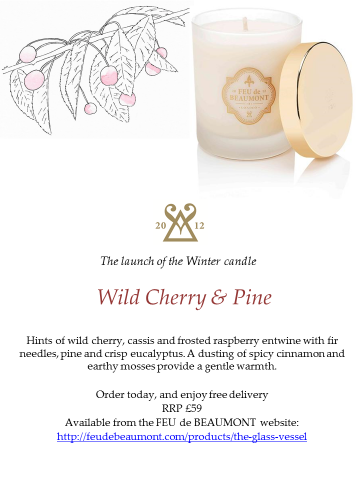
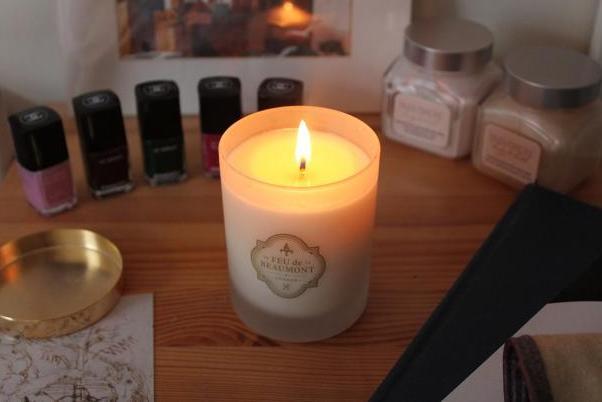
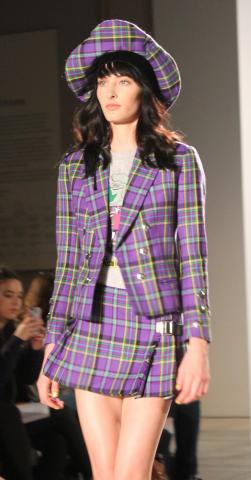
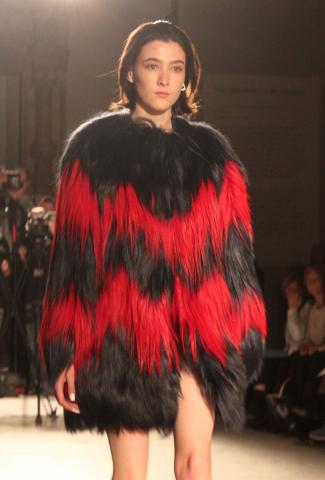
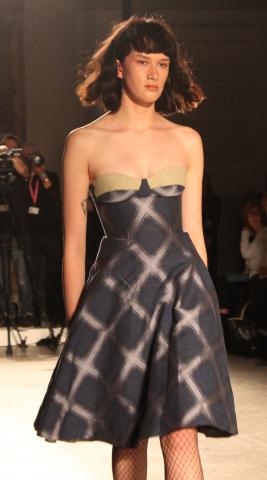
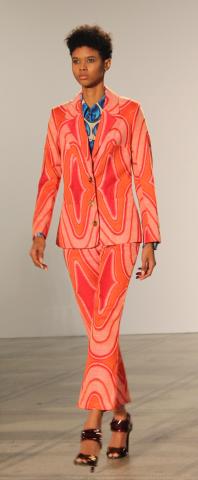
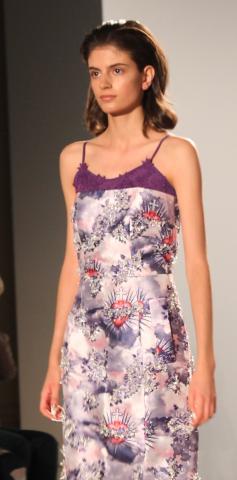
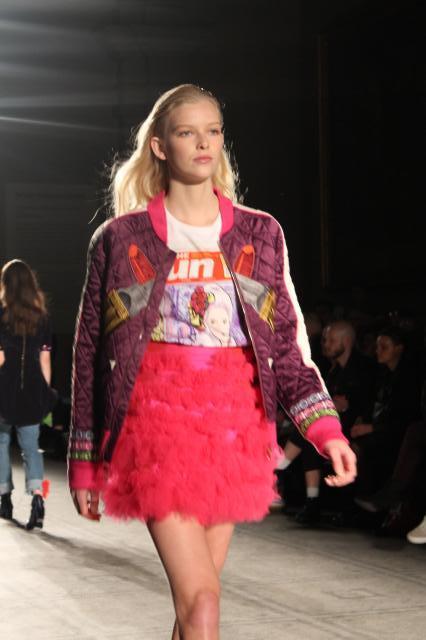
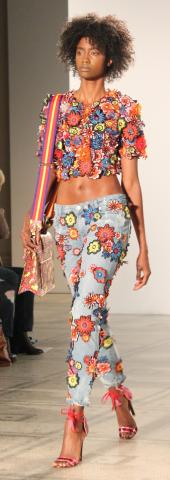
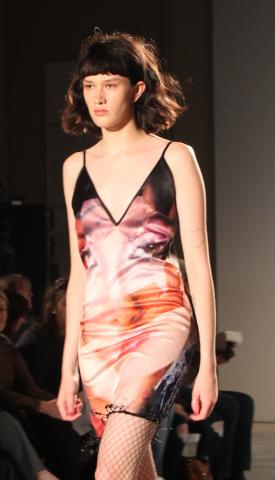
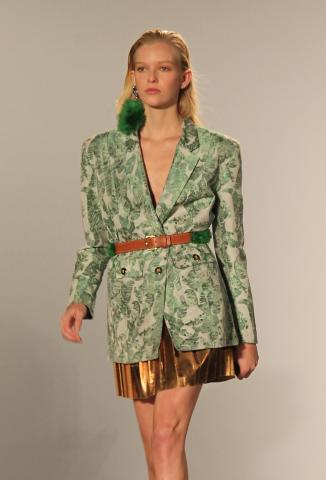
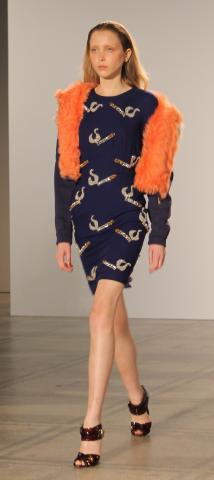
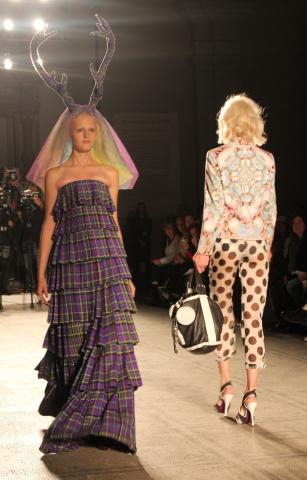
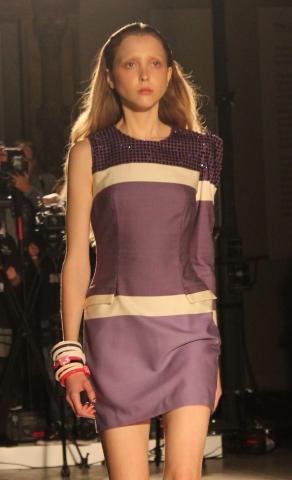
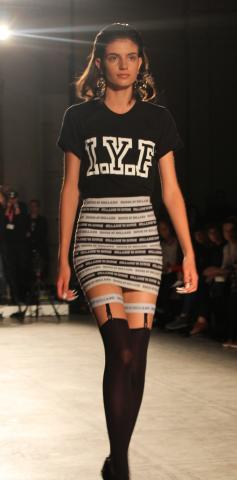
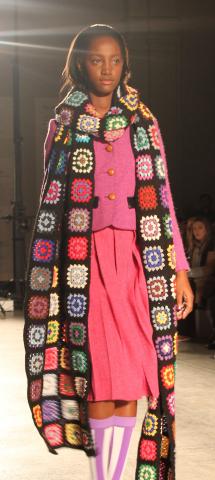
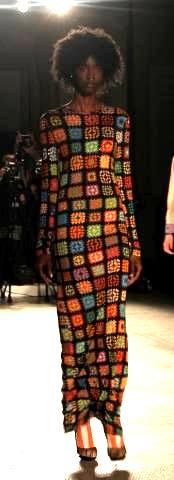
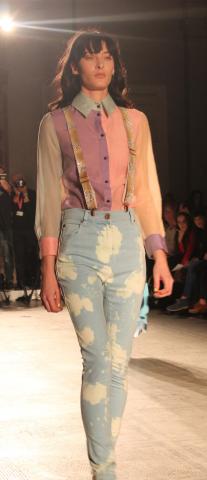
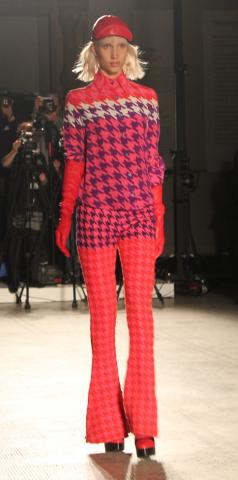
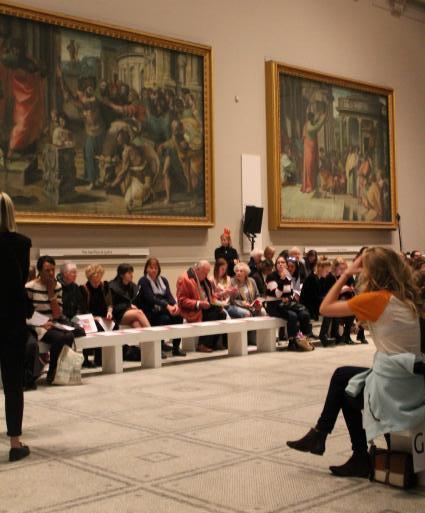
The New Autumn and Winter Fragrance Candle from Alice Beumont of Feu de Beaumont.
Wild Cherry & Pine. A delightful winter warmer.
As the weather cools down it's always a good idea to turn our attention again to making the living and working spaces of our lives even more welcoming and warming. In 2012 Alice Beaumont launched Feu de Beaumont Candles as a luxury brand with some unique key founding principles.
Alice uses the finest natural ingredients and oils and soya wax. The effect is easily discernible as you start to burn your candle. No fizzing as the candle slowly melts with the led-free wicks made from natural fibres. The candles and their beautiful keep-sake glass jars are made in the UK. For a unique gift I would recommend taking up the option for engraving of the golden plated lids for a very special gift that someone will treasure.
All products are free from animal testing and ethically made. The brand now has a broad list of fragrances in it's repertoire from the signature Feu de Bois, Jasmine, Gardenia, Orange Blossom, Oudh, Verbena and Rose (two of my favourites) plus the twin of my candle the Wild Fig, Cassis and Orange Blossom.
The 22 carat gold vessels also have a unique relationship to the historic in Alice's own words;"The fragrance that I use in my candles evoke happy memories, a sense of comfort and peace, which is why we have created our statement twenty-two carat gold vessels as permanent guardians to that nostalgia." With it's range of giant Porringer Vessels, Golden Goblets, Golden Snuffer and tea lights the brand, uniquely amongst luxury candles, looks to the rich heritage of Anglo history and ancient Northumbria for it's symbolic design inspiration. It's a warm gift of light for your home to be treasured and also not to be missed are the new long Jasmine scented matches in their beautifully painted tins showing scenes from rural life in Alice's home in Northumbria.
Henry Holland showcases his work at the V&A in the latest in their Fashion in Motion series.
Following on from the success of showing industry stars such as SIBLING, Christopher Raeburn, Peter Pilotto and Ralph & Russo; the V&A invited British London Fashion Week designer Henry Holland to showcase his work under the Cartoons in the Raphael gallery to a delighted audience. Always sold out, these shows by the V&A are an opportunity to showcase premium London based fashion labels to an audience who may not attend London Fashion Week shows or sometimes are curious connoisseurs of other forms of art and keen to take a look.
The looks spanning across several collections didn't have one unifying theme so eclectic is definitely the best way to describe the offering. Notable attention was paid to tartan themed designs and patch-working of materials. For all the high profile celebrity endorsements that Henry is known for this show was noted in it's attention to the down to earth themes of style and design. It almost felt like a celebration of homespun on the catwalk at some points which was notable.
Knit and crochet are fun practical ways to diversify a collection and the trailing scarf to the left accessorising the bright pinks of the jacket skirt and socks could be worn in three of the four seasons of the year. Extending the theme to the knitted dress is a logical extension of the idea and would suit a wide variety of clients. There are whimsical pieces here that need to be looked at in isolation as they stand alone amongst other works. A blue sky with light fluffy cloud prints and Harlequin coloured blouse is a flight of fancy. A bandeau style dress bias cut check patterning or the delicate light slip dress with it's loving print design.
Above all Henry's designs and work are playful in their nature and each season he seeks to re-work and re-invent themes that are recognisable from past decades. Henry seems to want to challenge his audience and provoke new ideas and conversations from his designs showing them things that they will recognise but with a new twist. Pieces range from the casual to those that could be worn on more formal occasions and on the red carpet. Looking broadly I think the Henry Holland woman could be defined as having a sense of fun and an appreciation of the history of style while part of her also seems to want to rail against it. This is a label that can produce pieces with a classical style but most of all it's for women who want to have fun with their closes and Henry hopes that they can.
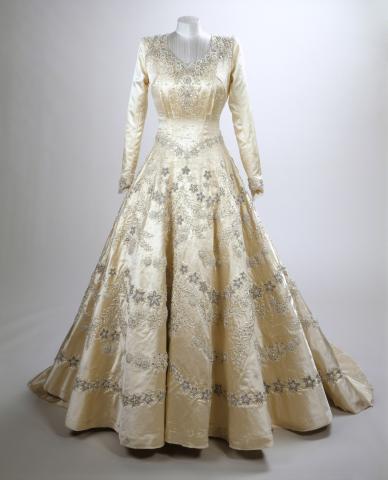
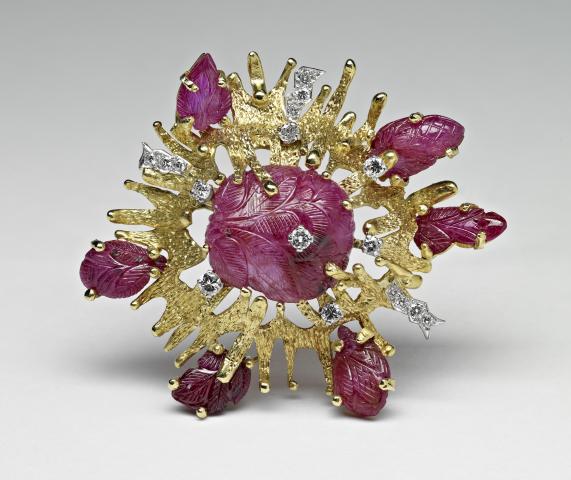
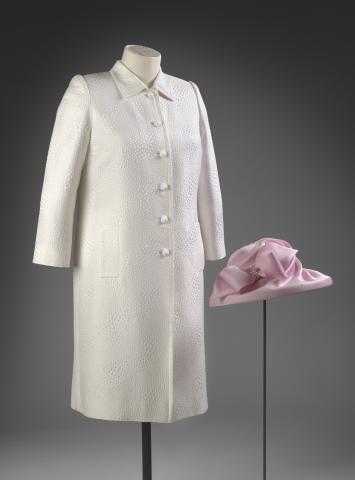
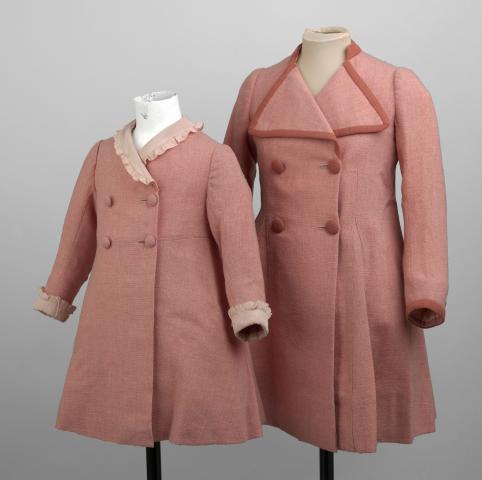
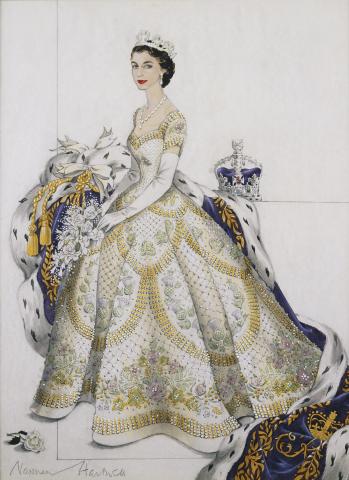
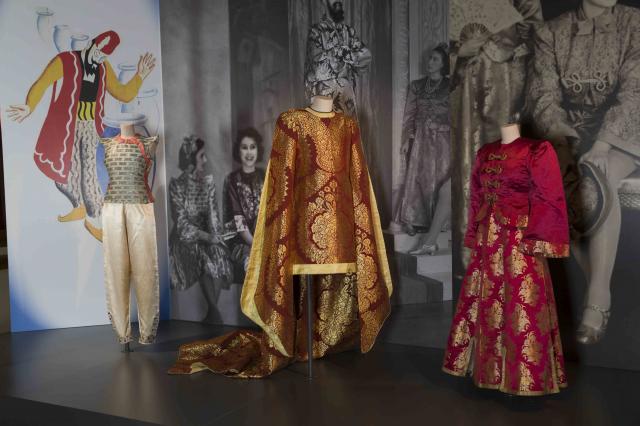
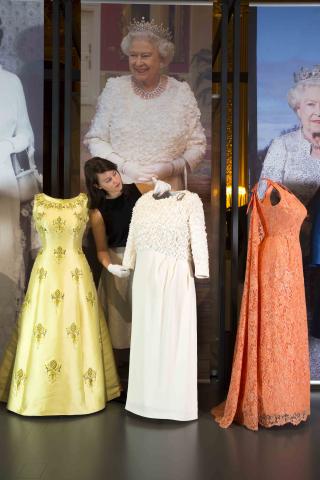
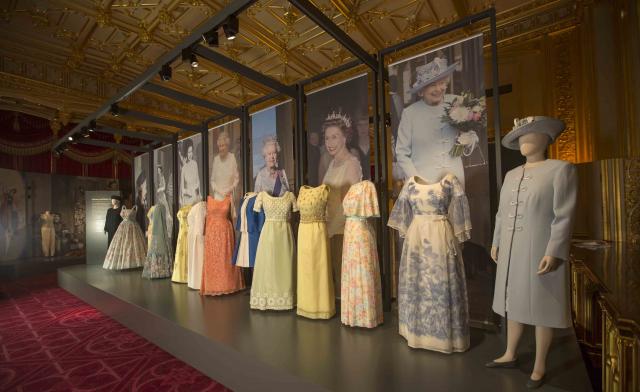
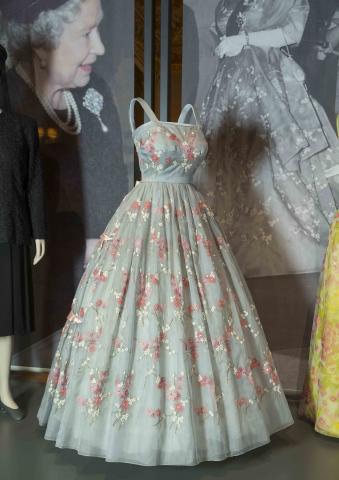
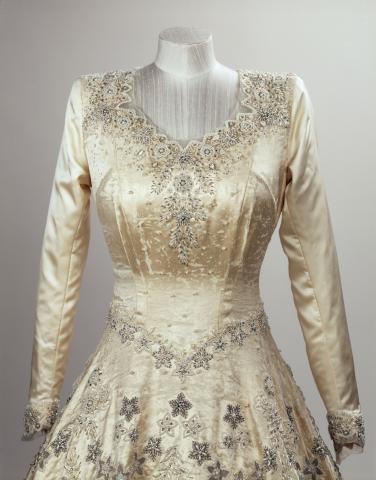
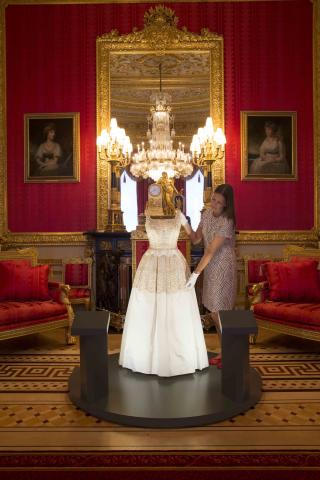
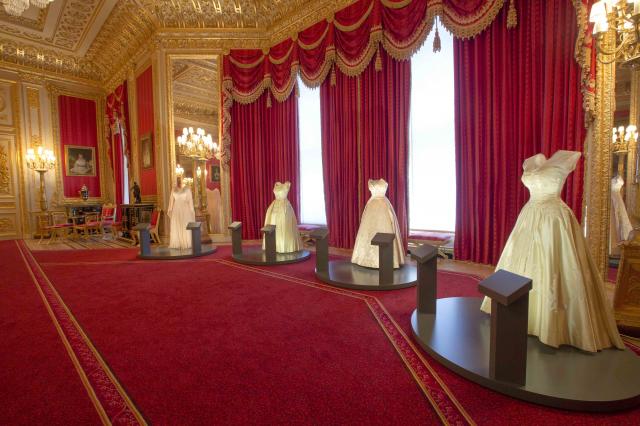
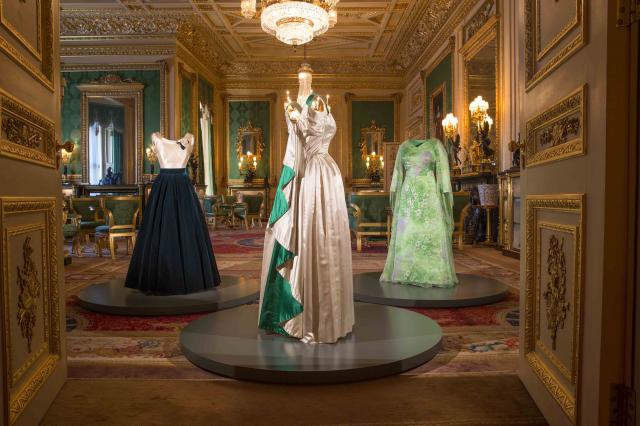
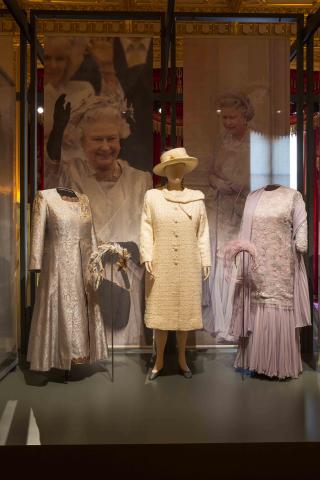
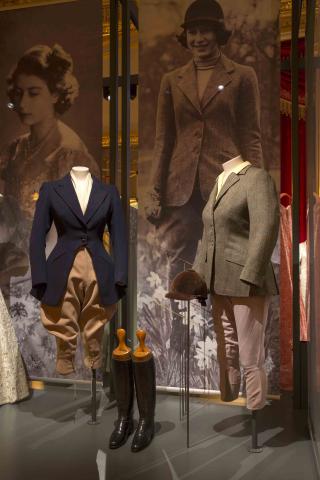
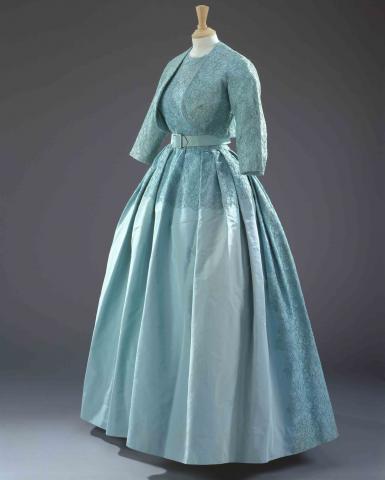
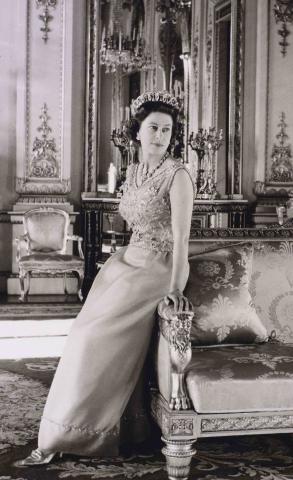
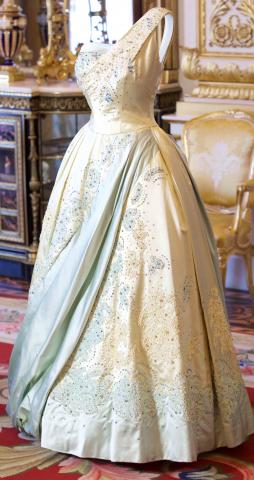
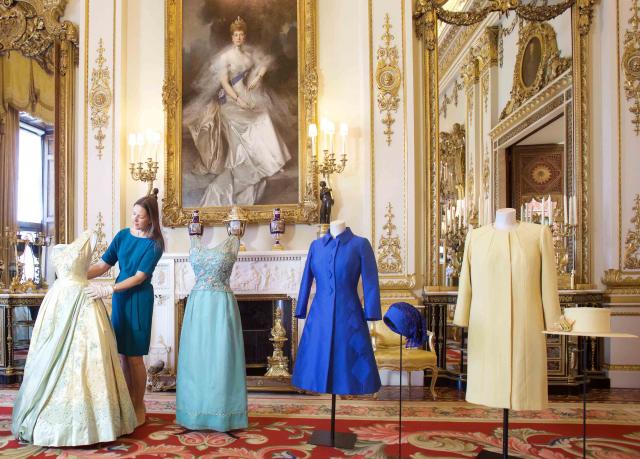
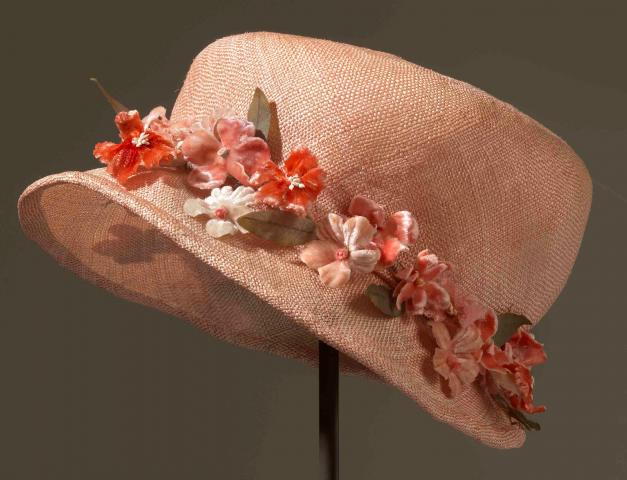
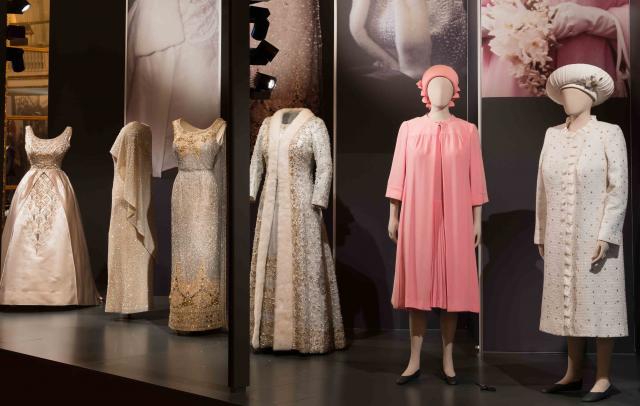
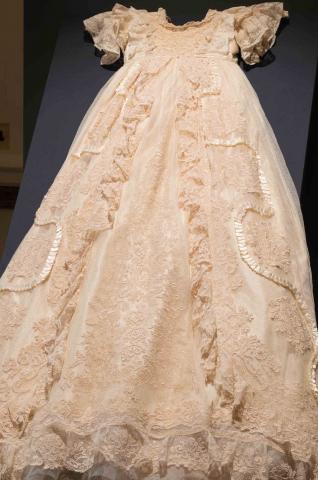
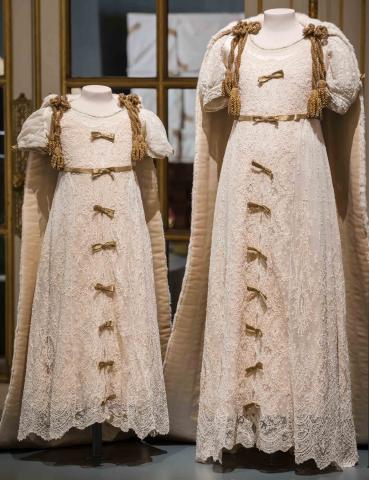
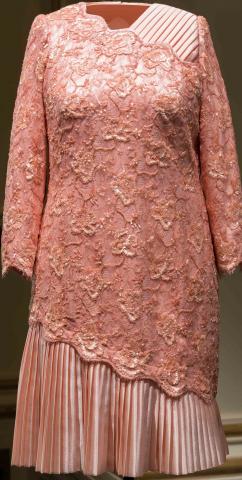
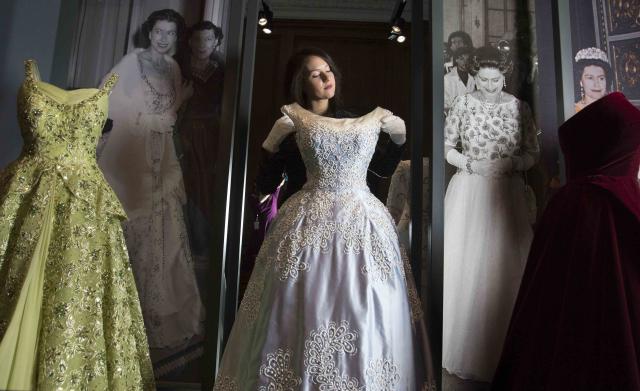

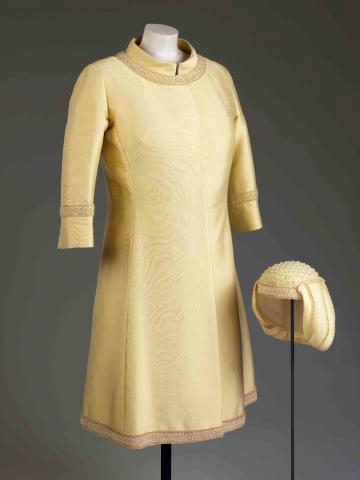
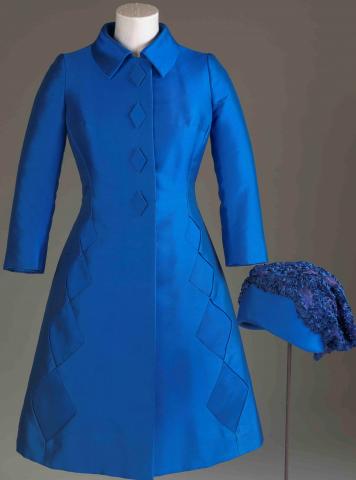
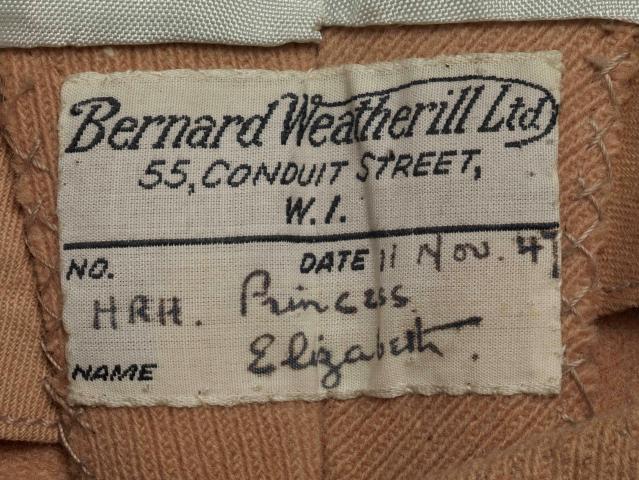
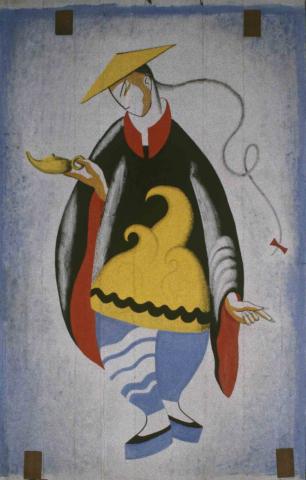
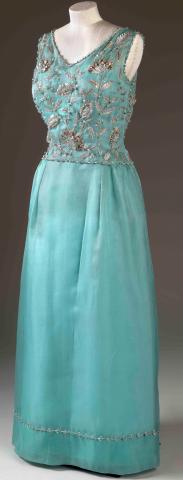
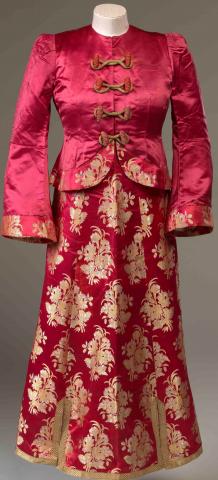
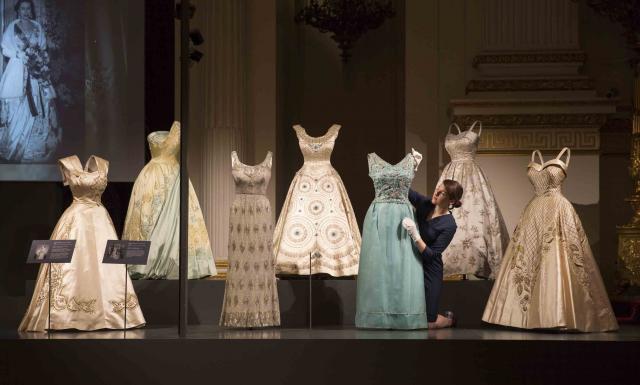
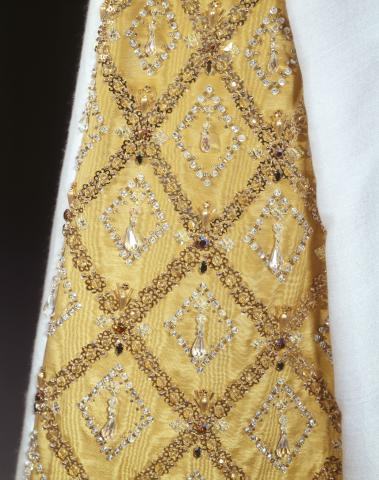
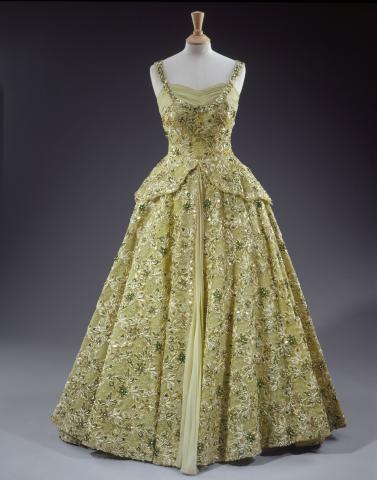
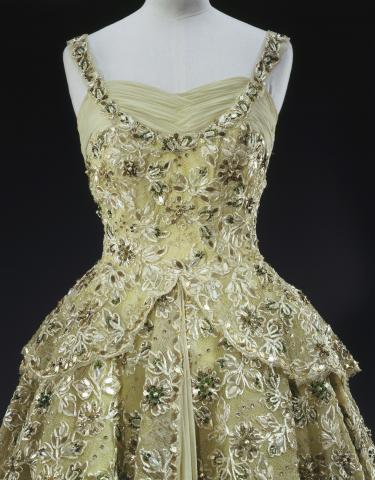
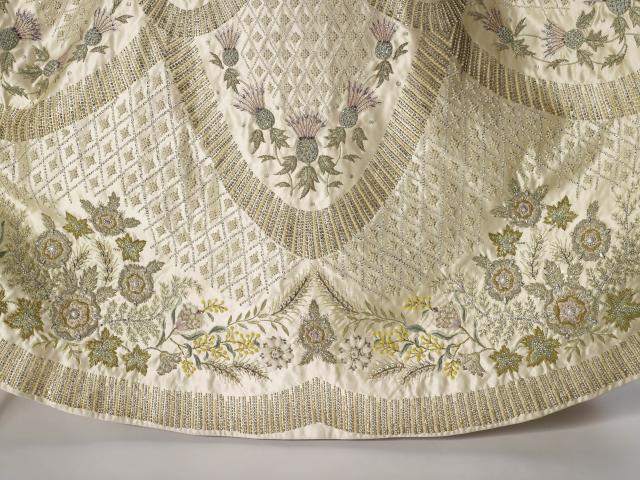
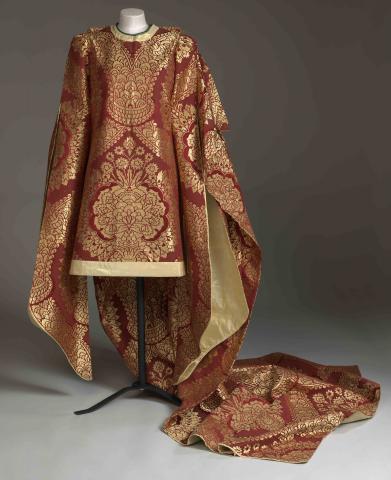
Fashioning a Reign: 90 Years of Royal Style from the Wardrobe of Her Majesty Queen Elizabeth II.
In many it's as much a celebration as an archival review of the clothes worn by the most recognised woman in the world. At her birth she was part of a high profile family and would always have dressed in the finest garments but it wasn't until later that her role changed from supporting family member to leading lady on the world stage and resulting in her wardrobe taking on a great political significance as well as ambassadorial as the Head of State of 16 Commonwealth nations at the age of 25. So there is a lot to explore through the 10 decades of the Queens life. A trio of Palaces was used to host the collection opening firstly in Scotland at Hollyrood, then Buckingham Palace and finally at Windsor in the Autumn through to New Year in 2017. Across the three palaces a total of around 150 dresses and outfits are shown to the public in a unique exhibition of the Queen's wardrobe.
Holyrood's collection of dresses led the way opening on 21st April the Queen's Birthday in a nice coincidence of timing making a harmonious link to the close relationship that the Queen has with this part of the Country. Fashion in many ways is a language and can be used very eloquently to emphasise and explore the importance of style in expressing the Queen's relationship with the different realms that she reigns over. In Scotland, as at the other Palaces, the garments displayed reflect the varied nature of the working duties that the Queen undertakes with Garden Party outfits alongside formal evening dresses worn at receptions at Balmoral and Holyrood. The detail of the clothes is breathtaking. HM The Queen is probably the leading patron of Haute Couture in the country, although it's rarely said, and is in a unique position to be able to give members of the public from all across the globe the opportunity to appreciate the work and skill that goes into crafting her wardrobe.
A gouache (water colour) illustration of the Coronation gown worn by Queen Elizabeth II by Normal Hartnell.
Two pink coats worn by Princess Elizabeth and Princess Margaret for their official visit to Holyrood House in 1937. The matching bonnets where trimmed with pink and white flowers.
Beautiful detail from a gown shown in full below displayed at the Palace of Holyrood in Edinburgh worn in 1972 on a state visit to Bangkok.
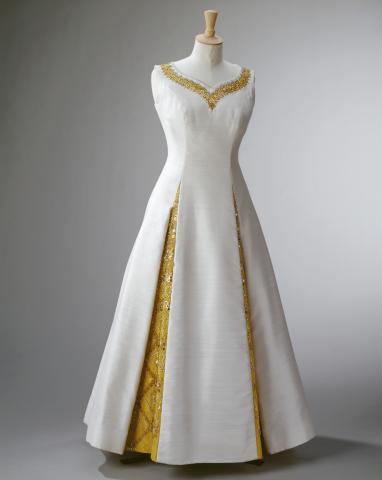
During history Scotland has always embraced the latest fashion and trends in the modern age producing many notable creative talents and through history also a key innovator and supplier to the global textile industry. Tweeds, tartans and cashmere's, not to mention quality wools are amongst some of the most important exports that we have and place Britain firmly on the international textile production stage. The beautiful colours of the Highland tartans appear below to the left in day and outfits and formal wear. When women in the Royal Family are dancing at Balls in Scotland it's always notable how their gowns are dressed with a tartan shawl of the Royal Stewart tartan when the Queen is in residence that has a wonderful movement with the floor length gowns as they twirl and dance in the most beautiful way. The most well known of these is the Gillies Ball founded by Queen Victoria for the Royal Family, their neighbours, estate and castle staff. It's an eye catching display of both heritage and affection. On Display in the Palace a dress that was worn by the Queen to the Gillies Ball at Balmoral Castle in 1971 designed by Norman Hartnell. The exhibition also showed a woven silk-tartan dress worn by Queen Victoria between 1835-37 illustrating an early use of Tartan in the Royal Wardrobe.
Tartan and Haute Couture seem to make a very good match. Note also the bolts of cloth placed near the models below in a subtle nod to the work and craftsmanship that is part of the backbone of the Scottish textile industry. Of all the dresses shown in Edinburgh my favourite was a the crimson velvet dress shown partly above and centre below. The jewel encrusted gowns are superb in their skill and mastery of craft but there is something equally as potent and poetic in the striking colour statement and the richness of fabric in this dress. Most importantly of all let's not forget the the word 'Glamour', something that Her Majesties wardrobe captures to in the most perfect way is a Scottish word in it's origin evoking the magical charm of beauty that a woman possesses.
In July the collection revealed another series of dresses at Buckingham Palace with time with a little more focuses on the Queens' early years of her life with her sister in London as well as the official Royal residences. Opening the look at the Queen's clothes in London is the replica of the Christening dress commissioned by the Queen in 2004. The original was worn by over 60 babies in the Royal Family since 1841 when Queen Victoria commissioned it for the birth of her first child Princess Victoria, later Empress of Prussia. Angela Kelly, the Queen's personal dresser, created a replica of the original from Honiton Lace that is currently in use by the family and it's this piece, in incredible detail that is on show to the public. It's rare to see such an intricate Christening gown in this day and age, one that looks like a Haute Couture piece and captivating in it's beauty.
Next to the left are the dresses worn by Her Majesty the Queen and her sister Princess Margaret for the Coronation of their parents King George VI and Queen Elizabeth at Westminster Abbey in 1937. The lace and silk tulle dresses and purple velvet robes are Couture created for children for the historic event that saw them sitting quietly with their grandmother Queen Mary and other relatives through the Ceremony that was seen around the world. Below to the right the Yellow Drawing Room at Buckingham Palace with a portrait of Queen Alexandra sitting between two full length mirrors displays several outfits worn by Her Majesty on different occasions. This is one of my favourite rooms in the State apartments (which are all beautiful) but this has a beautiful special light about it. It's also one of the rooms that the Queen receives her diplomatic guests in, notably often foreign Heads of State. There are a selection of outfits on display here from formal day wear to evening wear and a blue coat and dress suit worn for Princess Anne's wedding and a yellow coat and suit worn for the wedding of Prince William and Catherine, Duchess of Cambridge. The latter was designed by Angela Kelly and the crepe-wool beaded primrose dress and coat with a matching hat adorned with handmade silk roses and apricot coloured leaves. The outfits look completely at home in the surroundings with the mirrors helping to amplify the light that brings out the colour in the clothes so well.
High London Fashion Launch with Jasmine Guinness and Jade Parfitt
High is a new contemporary luxury brand that recently opened it's first UK boutique on Bond Street and I was invited along to the party to kick off the autumn season. Along with a host of industry insiders I can say that I was seriously impressed by the range. These a rock-chic feel to it but not too challenging and what I saw pretty quickly was that this is a collection that will appeal to women equally across a couple of generations at least as there are clothes that caught the eye of 19/20 years olds as well as women in their 40's and 50's. I had a chat with Jasmine Guinness who made the same observation that there where clothes that both she and her younger sister who was 20 where drawn to across the range and a strong sense of wearable style within this brand. It's amazing to see a label that has a Rock and Roll feel that you could also wear in a number of different working environments.
Above to the left, with Jade and Jasmine behind, is one of the many complete looks that can be put together from coordinating separates from this collection. A flared layered skirt with styled jacket can be worn as it is with boots or in combination with tights or trousers for an urban chic look. The jacket can be worn separately with jeans potentially too if you would want to. The colour themes in this collection are predominantly black but that doesn't inhibit you from experimenting a little with different colours in combination but I think it's going to work better if you chose bold colours. This is a collection that does an extremely good job of taking themes and ideas that appear familiar and then giving them a twist.
The lose form dress with glass applique motif and brace shoulder straps is an easy natural pairing with a lose black cardigan. Although the shapes are in lose form it somehow doesn't look too bohemian to reach a mainstream audience. Centre and to the right a mans-style pinstripe jacket follows conventional patterns but is cut to flatter the female form while the dress with it's velvet detail and cut away sleeves adds a nonchalant spin on city convention with a pocket watch chain added for a nod to the past and perhaps signalling the re-invention of the elder statesman masculine into the new young and feminine.
The Ivory Silk wedding dress worn by the then Princess Elizabeth for the occasion of her marriage to The Duke of Edinburgh as Westminster Abbey in 1947 was designed by Sir Norman Hartnell, one of the Couturiers that designed and created a number of gowns for members of the Royal family int he mid 20th Century. The dress is decorated with crystals and 10,000 seed pearls and this beautiful piece and as I moved through the collection I could see that it is a template for the later deigns of the Coronation gown and the gowns worn by Her Majesty when she opened Parliaments cross the Commonwealth domains. Each visit after the Coronation required a new dress and it was fascinating to see the embroidery on each that showed symbols and designs relating to the territories that Her Majesty was visiting.
Below in the Centre is the famous portrait of the Queen taken by Sir Cecil Beaton wearing the aquamarine coloured dress pictured next to it. This classic portrait of the Queen in the State Rooms of Buckingham Palace. This Turquoise dress was worn when the Queen made the first visit to Germany by a British Monarch since the Second World War. It's a beautiful iconic shot that represents the important contribution that the Queen makes to shaping and influencing fashion and trends. To the far right a blue and gold dress that the Queen wore on a State Visit to the Netherlands that has beautiful Sari-like detail to it with a beautiful baby blue sash across the front set against the skirt of the dress with sequinned applique embroidery running across the fabric from shoulders to hem also by Norman Hartnell. This beautiful piece, like many in the collection has a truly timeless feel to it and I and many women would be happy to wear such a piece today I think, naturally as a replica, but demonstrating that the innate style of many of the gowns created for the Queen has never gone out of fashion.
As for any family weddings are a big occasion for the Queen but in her particular role this will mean time in front of the camera as well as many points when she will be photographed with her family by Press and well wishers from around the world. Her Majesty is a well known for using the art of colour blocking to make a statement. Colour is decided to in close consultation with her dresser in view of the occasion and the next step is to think about the structure and design of garment and what extra embellishments can be added by Angela or any of her predecessors to the piece to create a beauty garment that looks regal yet tasteful and 'fit for purpose'. The Queen like many members of her family and other leading European Royals such as the Queen of Denmark, has a fine eye for the practicality of her garments as well as making a suitably regal statement. Hats are also a key accompaniment to her outfits utilising the skills of the best milliners in the country to add extra style characteristics to Her Majesty's outfits and presence at public events.
As with each residence the range of dresses on display for the public to see is large with screens and video footage behind many of the garments to show detail to the visitors at a distance also giving a sense of the life that the clothes have enjoyed supporting the Queen in her work. These garments showing the colour blocking dress code that Her Majesty is so well known for show that this style of dress is anything but boring and it is often a very good way to demonstrate the artistry of an atelier and how the in-House atelier of Angela Kelly, the Queen's senior Dress maker is more than equipped to create the most beautiful dresses and fittingly formal outfits that the Queen requires for her working wardrobe. Angela works with a team of up to twelve to dress Her Majesty and keep the Royal Wardrobe fully prepared for her needs. Each outfit has it's own wardrobe diary to catalogue when and where it has been worn and a careful record is kept of what colours and the styles have been worn by the Queen in different parts of the country to ensure that there isn't repetition of a look in the same area.
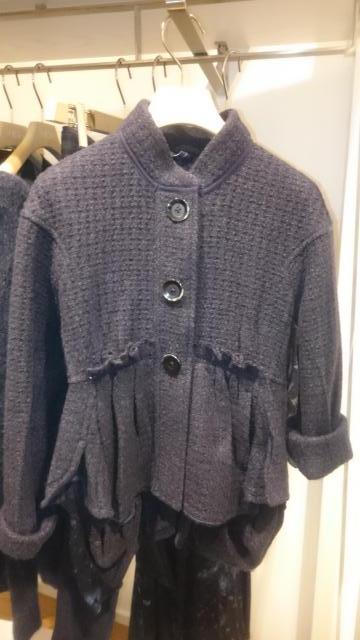
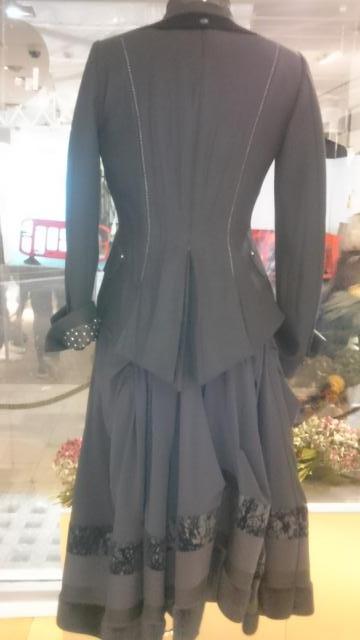
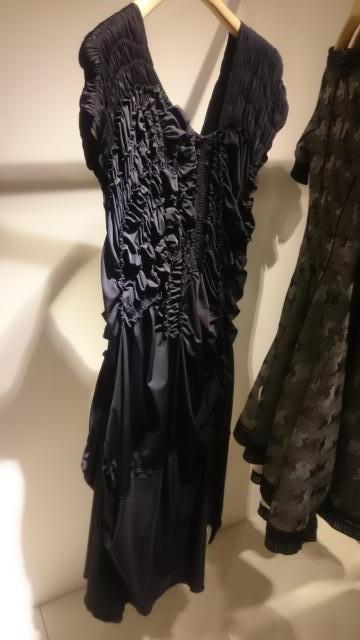
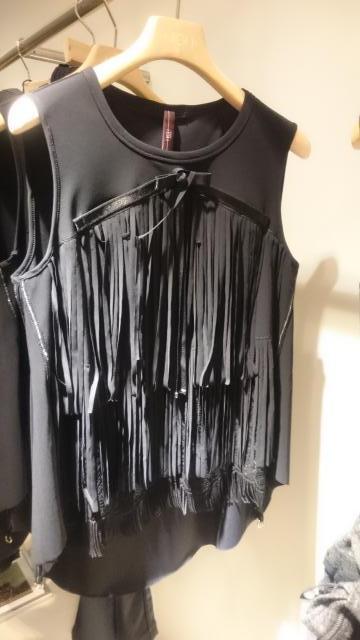
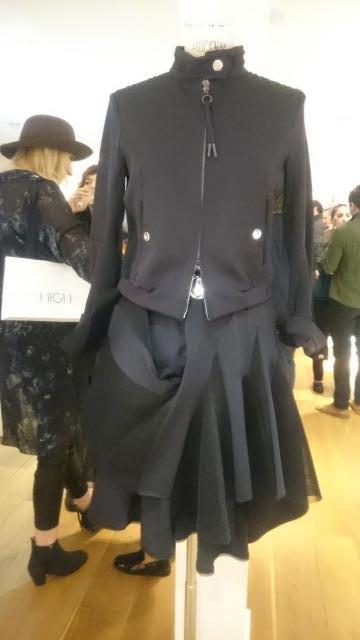
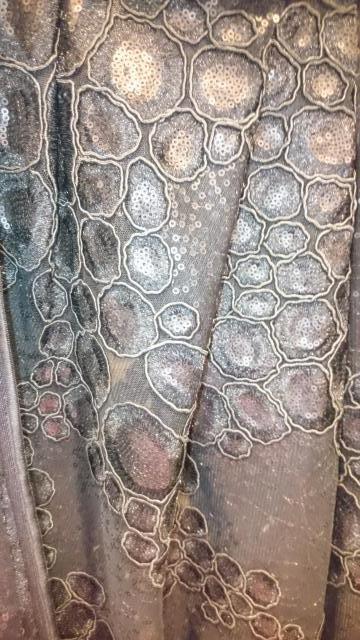
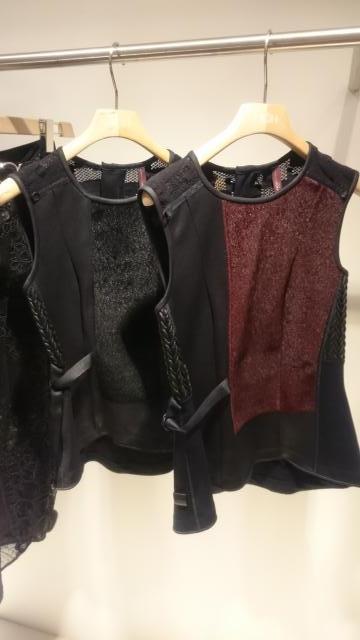
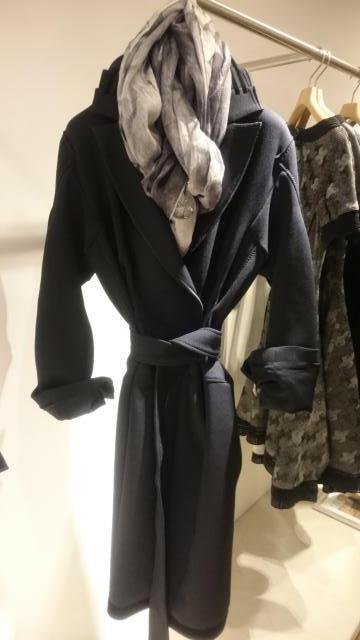
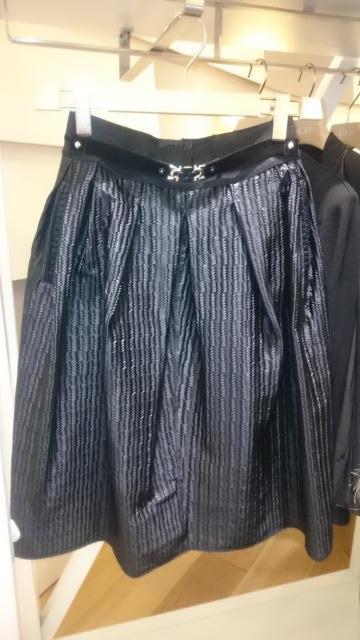
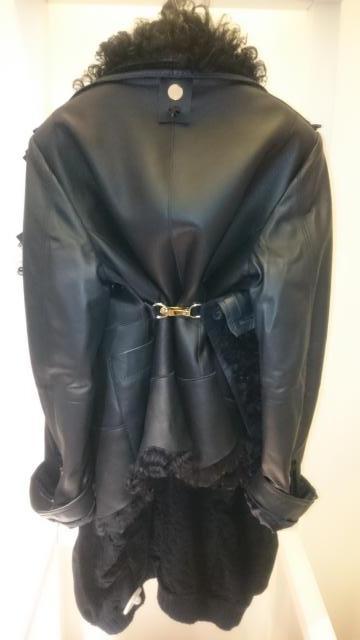
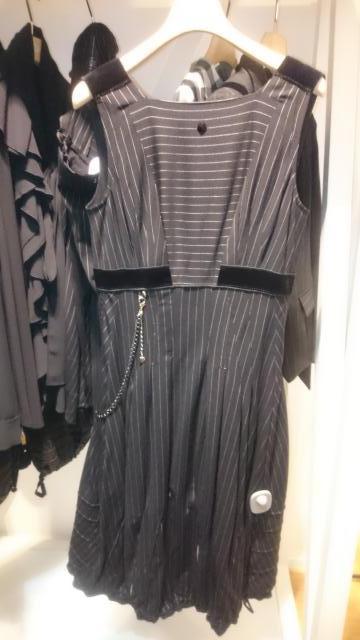
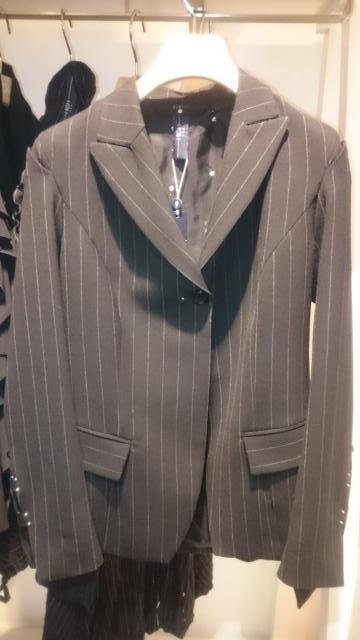
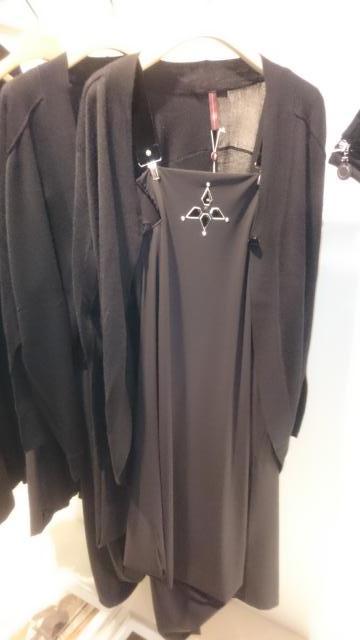
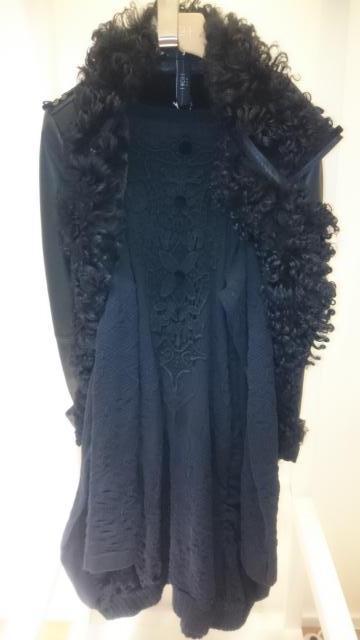
Jackets are a large part of this collection and there is once again heaps of scope to chose from. The collection features a number of vests using a blend of fabrics in the design such as tweed and leather married together with leather braid-work in the pair to the left. In many places the collection also plays with lighter gauzy fabrics bringing a feminine delicacy to the collection that adds a nuance of softness to many pieces that would prevent them from becoming too 'heavy' or harsh in their look. The High look leans much more in the direction of playful romance rather than a heavy 'leather' style look.
Centre above a coat from the front and the back marries romantic Gothic nuances of lace detail and echos of 18th century tailoring with leather and sheepskin. This look carries both delicacy and strength within it and is simply heaps of fun. To the right above is one of the key looks of the collection in terms of is broad appeal and versatility. This open necked wrap around belted coat channels one of the key trends of the Autumn and winter seasons and is super adaptable to the wardrobe. The collection is high quality in it's finishing and development so this is a piece that you can be assured will last well in your wardrobe across several seasons and I think would also make a great gift for a woman in your life, mother, friend, girlfriend or wife.
With the party in full swing it was also very notable that there where sales genuinely happening across in the store in a steady stream through the evening with figures from the London fashion scene genuinely interested in what HIGH have to give.
In this introduction to the brand, a modern 21st Century fairy tale could perhaps be glimpsed with a wistful, yet practical take on contemporary style that is at an accessible price point in terms of luxury retailing. The tailoring of the collection is also of a very high standard with cuts of jackets sensibly fitted to the figure without thinking about art and shape over practicality.
It's groovy and cool and many women over 50 or 60 can wear this with confidence too. Quite an achievement I think and also balancing eclecticism and a sense of experimentation with recognisable ideas and themes. Essentially this could be a collection that was messy in terms of all that it's trying to achieve but in reality it's anything but.
I expect to see HIGH gaining a string foothold as it continues to 'break' the UK and international markets and it may not be long before it's on the speed dial of stylists and magazine editors looking for shoot pieces.
The dazzling array of dresses worn across the decades by Her Majesty is shown through a series of the State rooms at the Palace in a tour that feels long enough to have done the subject justice in the fullest manner. Whether you are a Royal admirer or a student of Fashion history, or perhaps both, the intricacy and detail in the garments curated by Caroline de Guitaut, senior curator at The Royal Collections is one that can't fail to capture the respect and imagination of all who see it. I saw Men and Women of all ages spell bound by the collection. Even with the quiet gifts to friends and courtiers the remaining collection of clothes was vast enough to make a selection to show across three Palaces. Fashioning a Reign opened at Windsor Castle in the Autumn of 2016 to show the third installment of the collection shown to the public and, as each Residence showed the collection with a slightly different emphasis, this presentation placed an emphasis slightly more on the home life away from the Royal spotlight of the Queen and her life with her sister Princess Margaret as the two young princesses. It's perfectly fitting as Windsor is often regarded as the Country home of the Royal Family and although it is used for State receptions and official functions it's also a very private home for the family to relax at. During the Queen's early life it also served as a haven at the weekends from the air raids that hit London and many other British cities. As a keen Horse woman it's also crucially where the young Princesses Elizabeth and Margaret developed their Horse riding skills and love of country life.
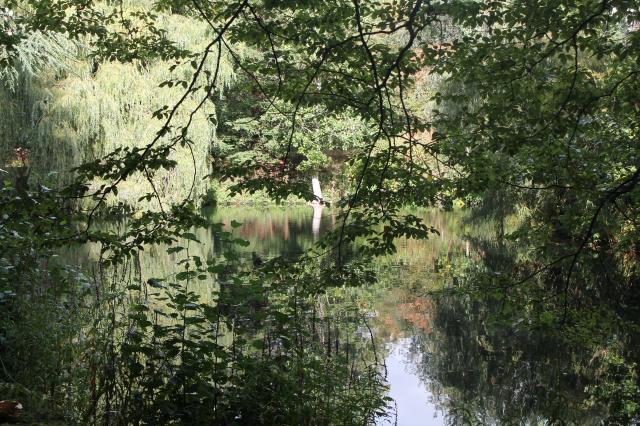
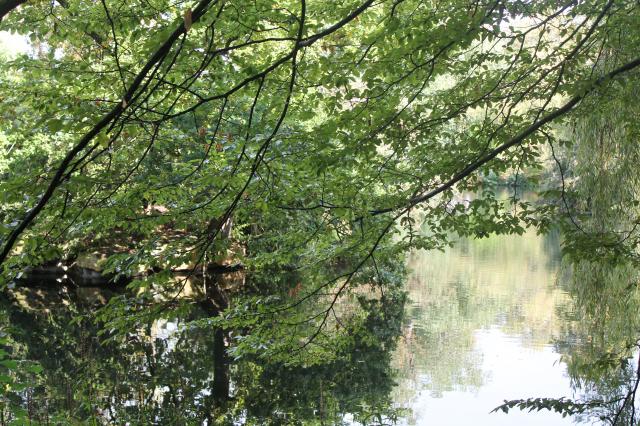
Above to the left the gouache illustration of The Queen in her Coronation gown by Norman Hartnell is one of the most iconic designs form the collection with it's huge historical significance. Styles and designs where then copied around the world and set the pattern for a life of fashion choices lied in the public eye. Traditionally the Monarch at the Royal Court was always an arbiter of taste and the early life of the Princesses their destiny of style ambassador for British craft and fashion had already begun long before their father became the future king.
Just as today where the Queen chooses designers in London and across the UK such as Annelo & Davide of Kensington for her shoes or Launa London for her handbags; all throughout her life she her clothes have been ordered from the finest British tailors as befits her position but also in a show of support for our strong depth of heritage and craft within this country. Her Majesty could be dressed by anyone in the world that she chose, but in general she generally buys British. The outfits above to the right are part of the Queen's country wardrobe and to the left you can see the label of Bernard Weatherill, one of the well respected British outwear fitters that is still leading producer of Country sports wear. The outfits above to the right where worn by the Queen for riding and to the Windsor Horse Show in the 1980's.
Life at Windsor in the Queen and Princess Margaret's childhood was full of fun and games as well as offering easy access to the academic instruction across the river at Eton College.
Hem detail from the Coronation gown worn by Queen Elizabeth II by Normal Hartnell showing flowers from each of the realms including the most prominently the Scottish thistle.
Scenes from the Garden at Buckingham Palace.
Christmas Pantomime is a great British tradition and a wonderful way to raise spirits and laughter. On display at Windsor are a number of the costumes worn by The Queen and other players of the 'Windsor cast' for the Pantomime Aladdin in which she starred during the Second World War. In the starring role as Aladdin the Queen wore a relatively simple outfit of white silk-satin trousers and tunic vest, to the centre of the picture below, while Princess Margaret played Princess Roxana in a Scarlet jacket and floor length dress and another member of the cast played the Emperor in another richly embroidered garment. To the right a beautiful gouache illustration by Claude Waltham for the production in December 1943. A series of pantomime's was performed over the years with other performances including Old Mother Red Riding Hood and Cincerella. Other actors where from the Royal School in Windsor and some became life long friends of the Queen and Princess Margaret.
Windsor Castle is always a beautiful and fascinating place to visit and with the addition of the Queens evening gowns displayed in the State Apartments it's even more possible to visualise the working life of Her Majesty and the Royal Household as she carries out her duties across the year. Below is a display of evening dresses in both the crimson drawing room and the blue drawing room. These are two of the most breathtaking rooms in the whole Castle and The Queen, like many of her forebears, is no stranger to understanding the impact of an almost theatrical stage setting and presence. The amplified power of the scene setting and dressing of the rooms with the addition of costumes creates a truly memorable experience and something that your inner eye will capture and remember for a long time.
As well as a view of the Queens current working life these rooms with their long mirrors and candelabra and chandeliers also, for me at least, evoke former era's of the Castle's life in the late Hanoverian and Victorian era's when these rooms where originally decorated. They where designed by Nicholas Morrel and George Seddon and echoed the layout of the Crimson Drawing room at Carlton House in London. Carlton House was the London residence of George IV with all the theatrical splendor that he was able to entreat from his team of architects. The Green drawing room is often not permitted to be walked through by the public due to the layout of the tour but these three dresses, colour coded to match with the interior, offer a tutored glimpse into the layout of the rooms so amenable to hosting visitors.
There is so much beauty in the clothes that one feeling that occurred to me when looking at them was that although this is a collection that is largely looking back to earlier decades and showing very formal outfits for the present; it's easy to find styles, finishing applique details and colour themes that are not too dissimilar to what many women and girls would like to wear today for formal events. In essence this selection of gowns and outfits worn by the Queen feels like a retrospective that isn't too frozen in some by-gone time.
If there was ever a point in the future when a member of the Royal Family wished to adapt any of the designs worn, particularly the formal evening gowns, then there is tremendous scope for experimentation potentially here too. The shapes and styles used for traditional formal evening wear are often quite generic in the sense that they will suit many figures and shapes although, of course, designed for the sole intention of being worn by the Queen as she carries out her duties in the United Kingdom and across the world. The colours and shapes are soft and sympathetic and there is a quiet sense that this is a wardrobe of garments that have also been designed to be enjoyed. The Queen's re-wearing of outfits at carefully chosen intervals shows not only a nod to economy but also hints at her enjoyment.
A jewel brooch from the collection set with diamonds and made with gold.
It's truly a beautiful collection and I'm very glad that it's being brought to the light for the public to see in this special year to celebrate the Queen's 90th birthday. Many people will be visiting the Palaces for different reasons to view the Royal Collection during the course of the exhibition but for those with more than a passing interest in Fashion and design it's a must to try to get to at least one of the collections shows. Tickets to any of the Royal Collection Trust and Historic Royal Palaces properties allow for a return visit within 12 months.
This is particularly handy if you are fortunate enough to be near one of the Palaces as you can potentially spend a longer time looking at the clothing collections and return for another visit. If you are not able to visit in person (I know many of my readers are around the globe) it can hopefully spark interest in looking at the Queen's wardrobe collection through other forms of media. One thing that has occurred to me is the possibility that there could one day be a permanent display of parts of the Queen's wardrobe at one of the Royal Palaces and given the demand and interest shown in the collection I think this may be a possibility for the future.
